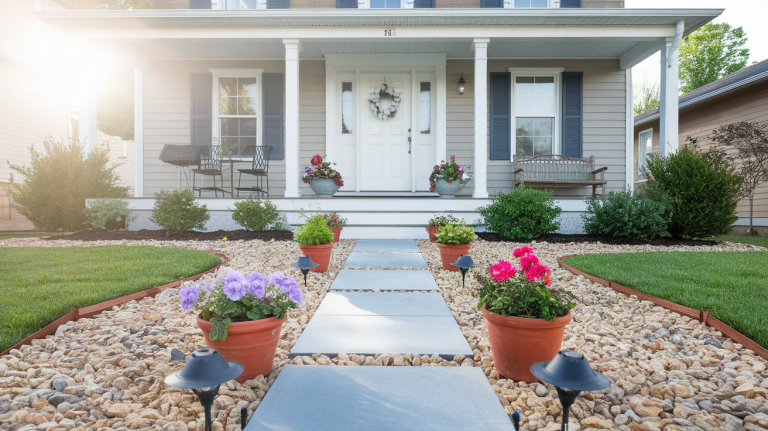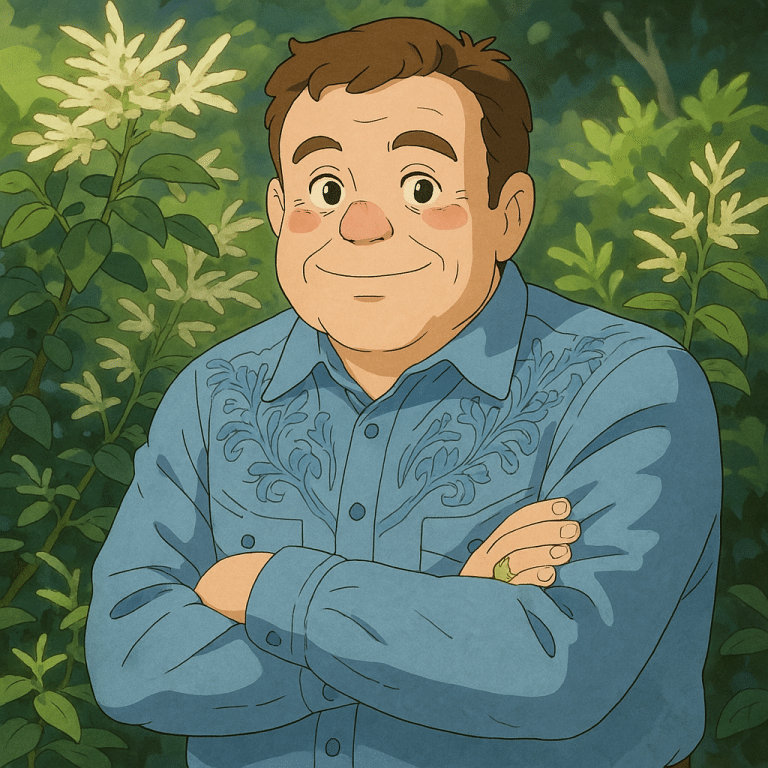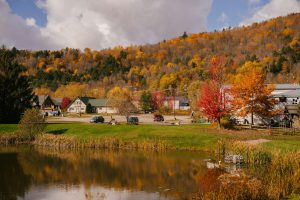A great-looking front yard doesn’t have to cost a lot. I’ve learned that with a few smart choices, you can make your outdoor space shine on a small budget.
It’s all about picking the right plants, using what you already have, and adding a few creative touches.
A clean yard with simple updates can boost curb appeal fast. I’ve tried many of these ideas myself, and they do make a big difference.
You don’t have to be an expert or spend a lot to see real results.
From mulch and edging to low-cost flower beds and DIY paths, there are plenty of ways to make your front yard feel fresh and welcoming.
Let me share my favorite cheap landscaping ideas that actually work.
What to Do First Before Landscaping Your Front Yard
Before planting anything or laying new mulch, focus on a few easy cleanup steps. Start by mowing the lawn, trimming overgrown bushes, and removing dead plants or weeds.
Pick up debris, sweep walkways, and edge your lawn so everything looks sharp and tidy. This simple cleanup already improves how your yard feels.
Check the condition of your soil, note where the sun hits, and take photos so you can plan better. Fix broken planters, straighten stepping stones, or tighten loose lights.
Clearing space gives you a fresh canvas to work on and helps you see which ideas will fit best.
Starting with cleanup means your budget landscaping ideas go further and last longer. It sets the stage for everything else.
Cheap Simple Front Yard Landscaping Ideas
You don’t need a big budget to refresh your front yard. These simple, affordable landscaping ideas help you create a welcoming space for less:
1. Mulch for Instant Impact
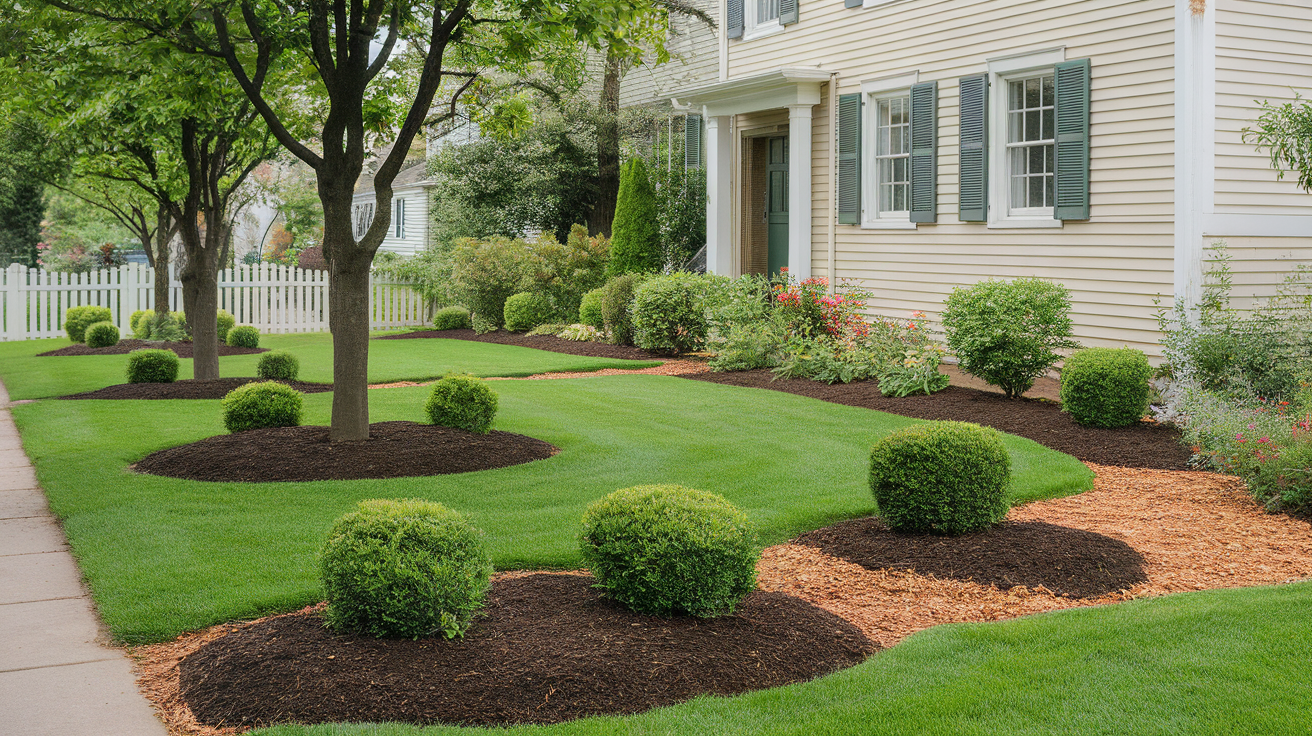
Mulch is one of the easiest and cheapest ways to freshen your front yard. A few inches of mulch around flower beds or trees instantly gives a neat, unified look and suppresses weeds.
Organic mulch also conserves moisture and improves soil over time.
You can get mulch in bulk or for free via local tree services or municipal programs. Even a fresh layer of home‑collected wood chips makes a big visual difference.
2. Gravel or Stepping Stone Path
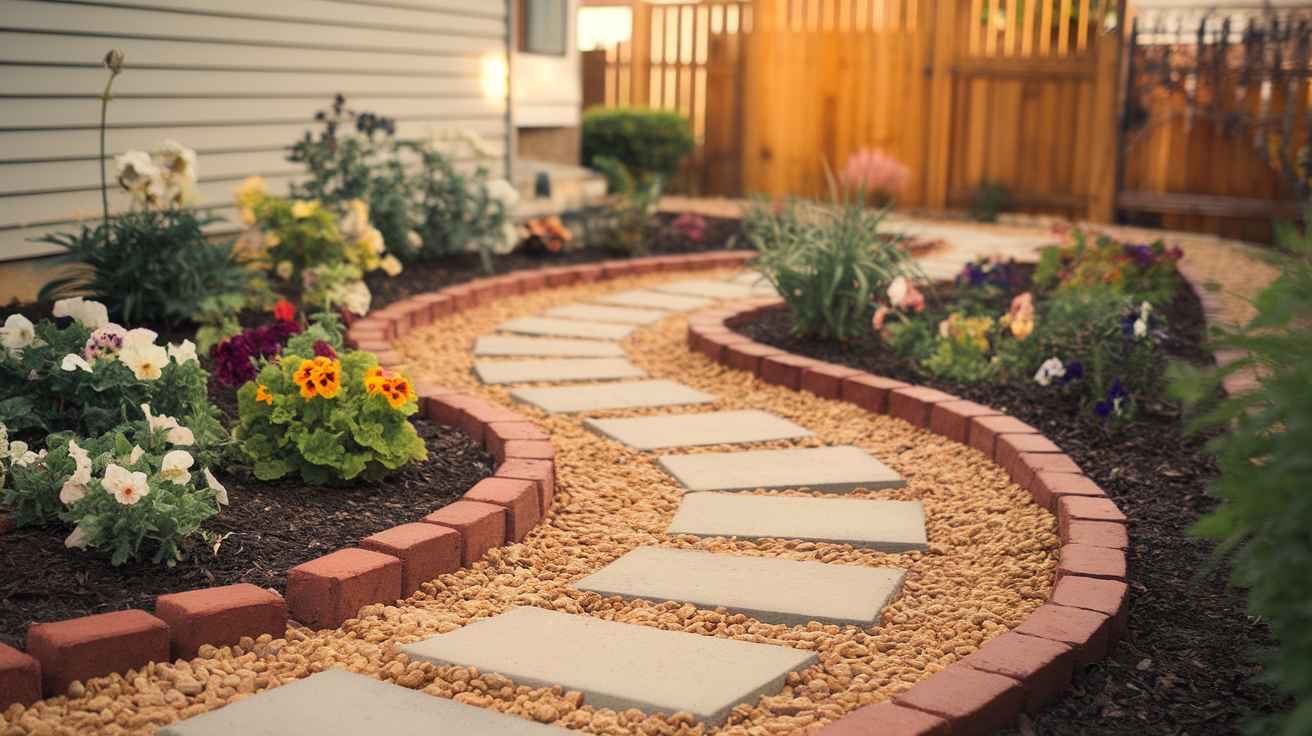
Installing a pathway with gravel or concrete stepping stones adds structure and charm at a low cost. You mark the route, add a weed barrier, and fill with crushed stone or lay pavers.
Edging with bricks or groundcover plants makes the path pop.
This DIY project looks neat and directs visitors to your door or garden feature. Even simple gravel paths cost far less than cement and take just a weekend.
3. Ground Cover Instead of Grass
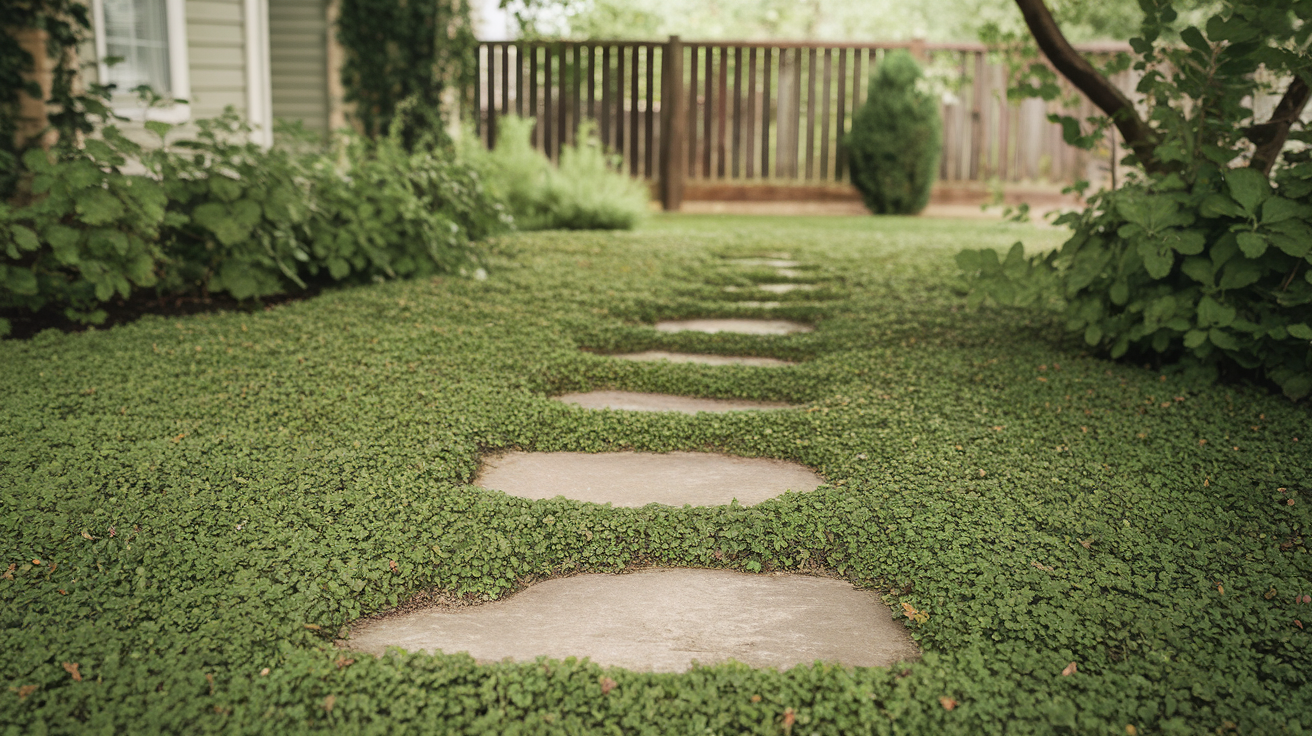
Replace a struggling lawn with ground covers like creeping thyme, clover, or sedum. These spread fast, resist weeds, and eliminate the need for mowing. Many spread from plugs or seeds and need little water.
Over time, they fill bare spots and create a soft green carpet.
Ground cover outfits shaded patches or slopes where grass fails. It’s low‑maintenance once established and easier on your wallet than frequent lawn care.
4. Plant Low‑Maintenance Perennials
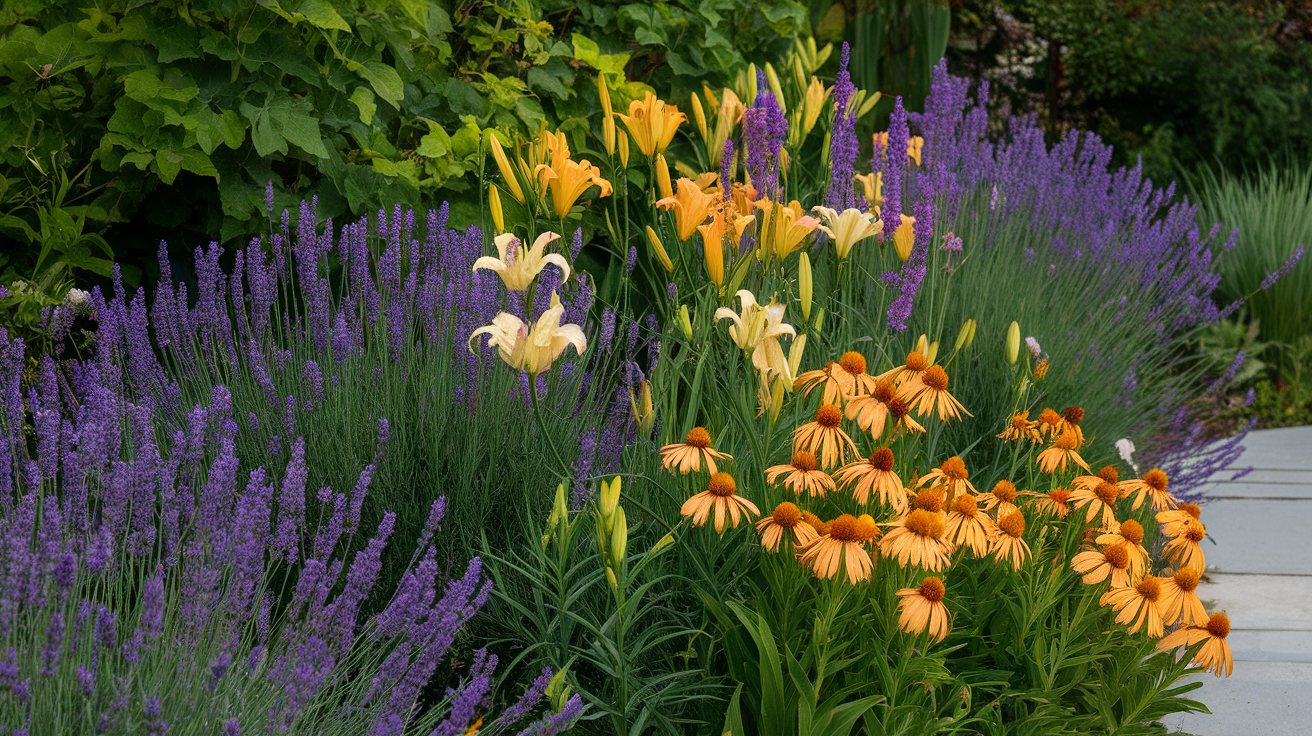
Choose hardy perennials like daylilies, coneflowers, lavender, or ornamental grasses. They return each season and require minimal care. Early blooms add color without yearly replacement.
Plant in clusters near walkways or entry to soften edges.
Grouping just three to five types keeps costs low and appearance tidy. Over time, perennials fill in and reduce the need for annual planting.
5. Shrub Borders for Structure

Use low‑maintenance shrubs like boxwood or privet to create structure and year‑round greenery. Shrubs along walkways, foundations, or driveway edges frame your house without monthly effort.
Choose slow‑growing varieties and plant in groups for a fuller effect.
Shrubs also provide privacy, pollinator habitat, and act as natural fences. Once planted, they require only occasional trimming, with no need for constant upkeep.
6. Upcycled Planters/Containers
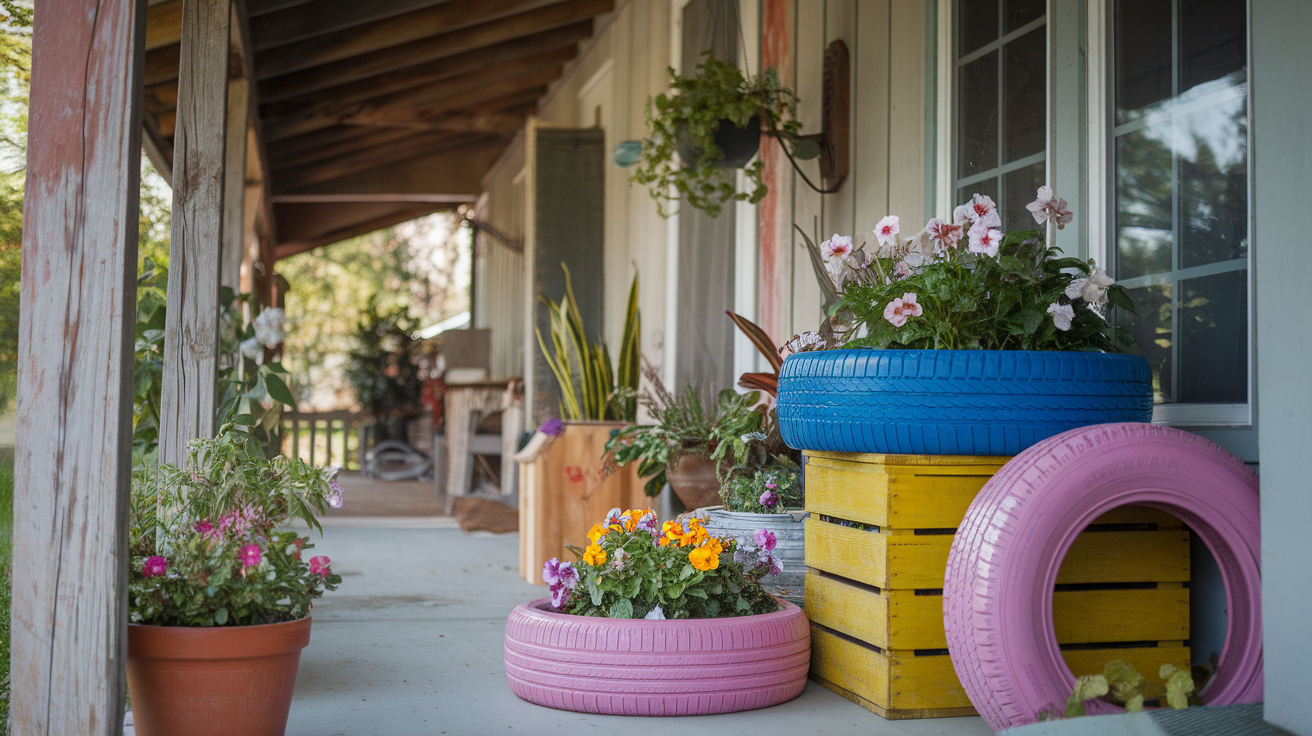
Reuse old buckets, tires, pallets, or crates as garden planters. Paint or stain them, fill with potting mix, and plant flowers or herbs. Containers can be moved and changed seasonally.
A painted tire with marigolds, or a reclaimed pallet wall with pots, looks creative and personalized.
This approach saves money, reduces waste, and lets you experiment without permanent planting.
7. Window Boxes for Color
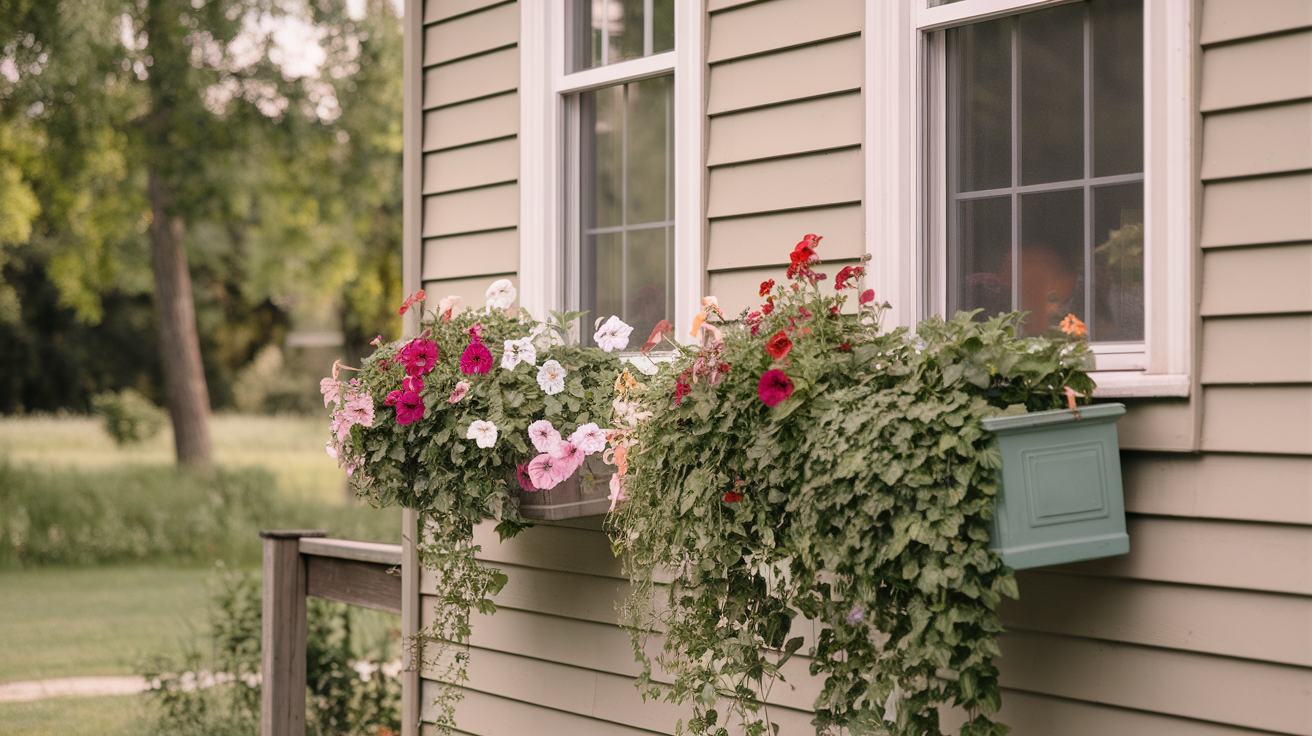
Window boxes are an easy way to add charm and color without digging. Attach them under windows and fill with bright annuals or hardy perennials. Cascading plants like ivy or petunias soften the look and add movement.
These boxes draw attention upward and frame your windows nicely.
A few dollars for each box, plus some soil and plants, gives you seasonal beauty. You can change colors with the seasons or let tough plants return each year.
8. Solar Pathway Lights
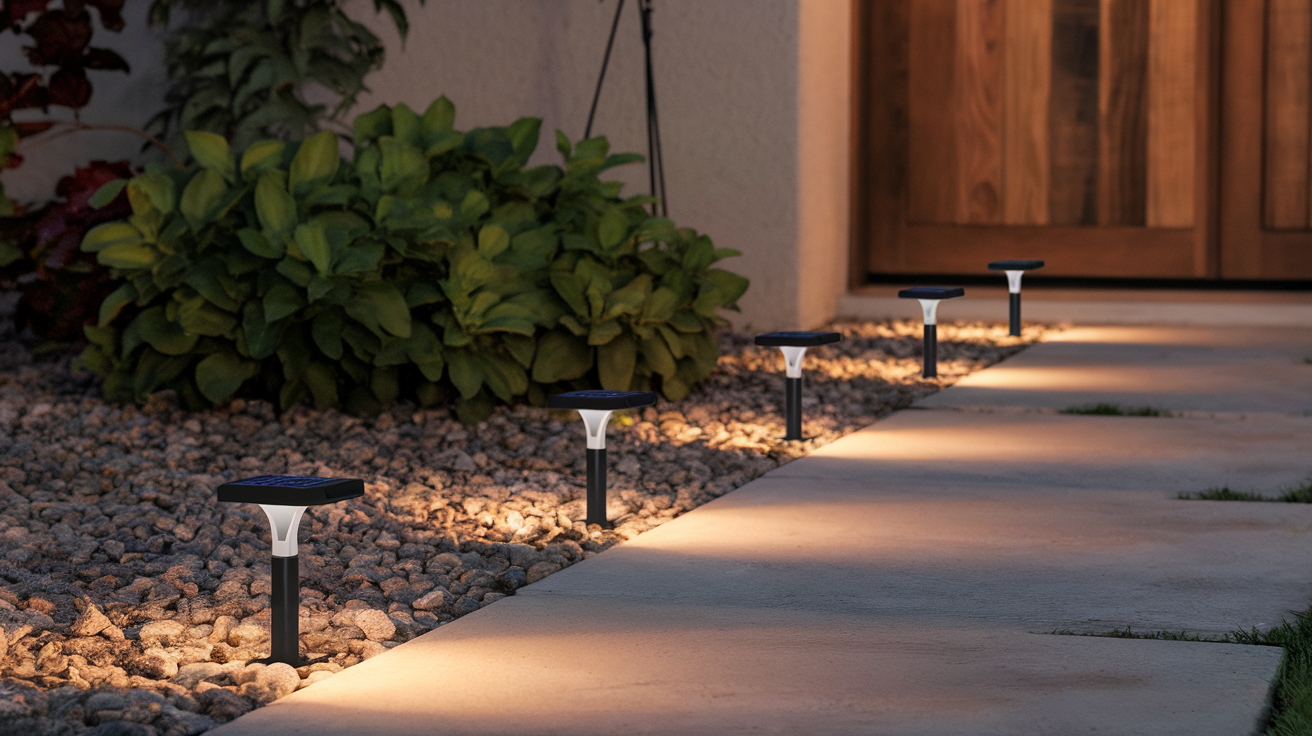
Add soft lighting and curb appeal by placing solar lights along walkways, beds, or the driveway. These lights charge during the day and automatically turn on at night, no wiring needed.
You can find them in packs for under $30, and installation takes just a few minutes.
They highlight garden features, increase safety, and create a cozy atmosphere. With different styles available, they easily match your yard. It’s a simple, budget-friendly upgrade that adds impact.
9. Rock or Gravel Beds for Texture
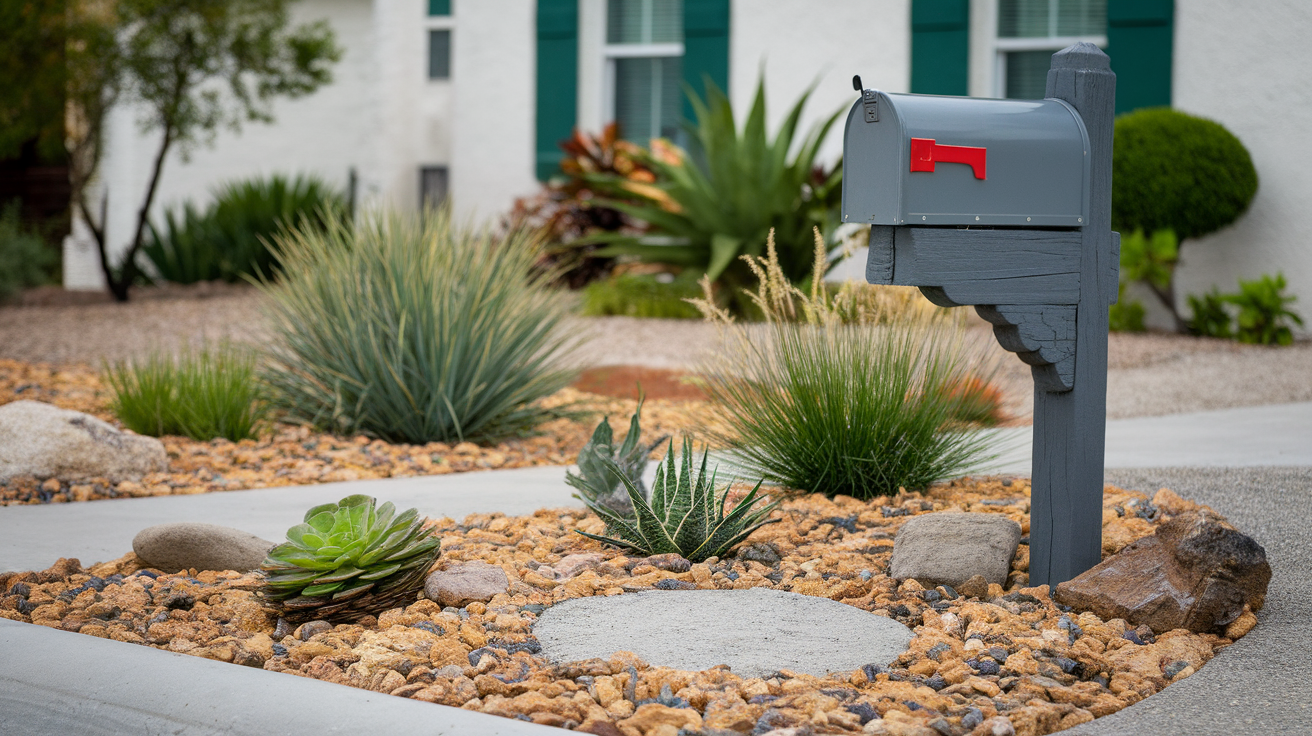
Rock or gravel beds are perfect for dry, shaded, or sloped spots where grass doesn’t grow. Lay down landscape fabric, top it with gravel or decorative stones, and add drought-tolerant plants like succulents or grasses.
The contrast in texture and color adds visual interest.
These beds require almost no watering or weeding, and they look sharp all year. A small rock garden near the entry or mailbox offers structure and style at a very low cost.
10. Painted Front Door or Mailbox
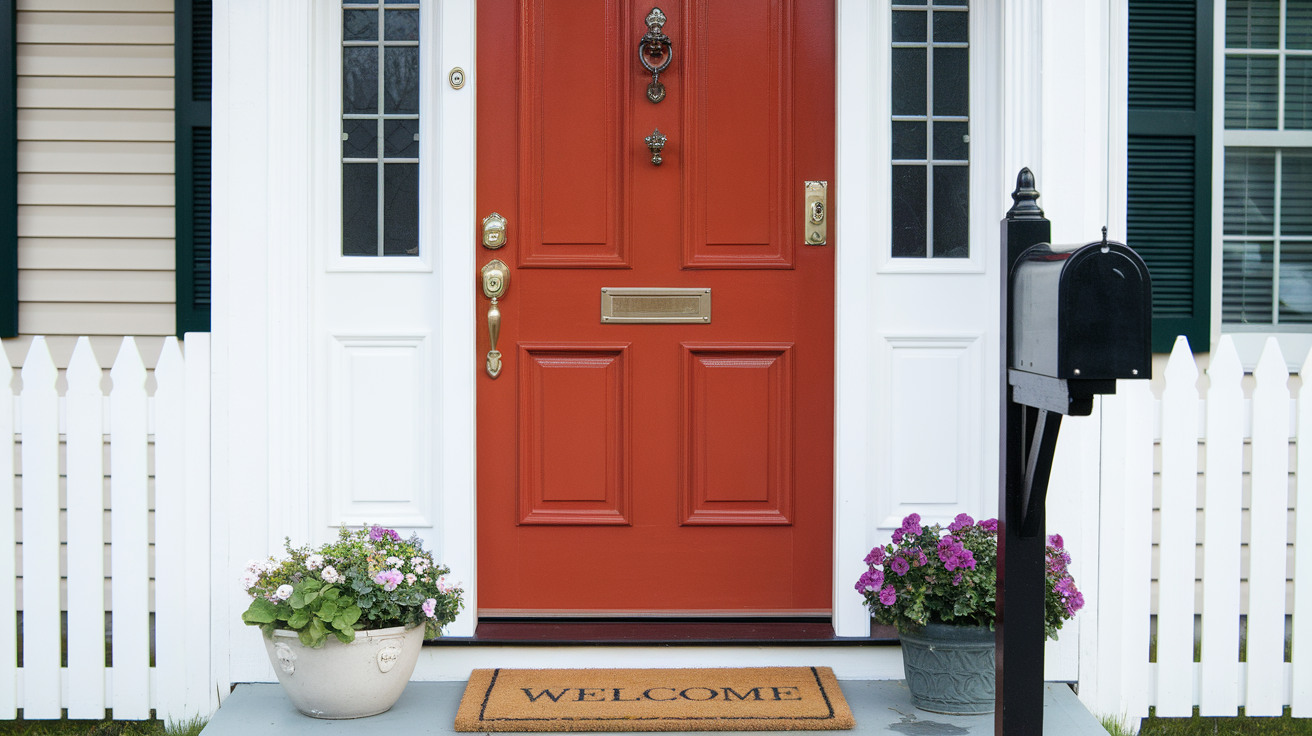
Refreshing your front door or mailbox with a coat of bold paint can dramatically change how your home looks. Choose a vibrant color to contrast with your siding, or go classic with black or navy.
Upgrade the hardware for a finished look.
This project only needs one can of paint and a couple of hours. Add nearby potted plants or a new doormat to tie the space together. Small updates like this make a big impression.
11. DIY Brick or Stone Edging
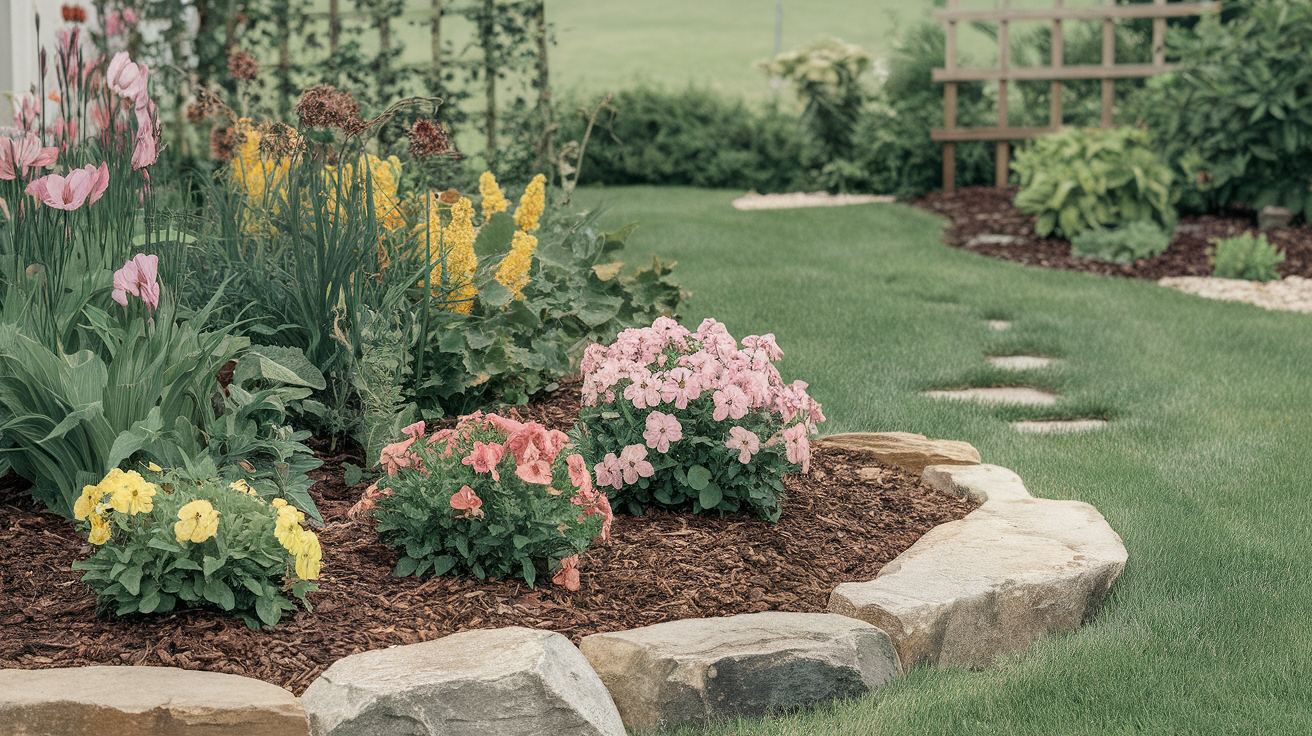
Create tidy borders for garden beds or paths with leftover bricks or natural stones. Lay them flat or stand them upright to create a simple edge. You don’t need mortar, just a shovel and a level surface.
This helps keep mulch in place and grass out, and it makes the whole yard look more finished.
Reclaimed materials are often free or very cheap. It’s a one-day project that brings definition and structure to your landscaping.
12. Container Gardens Near Entry
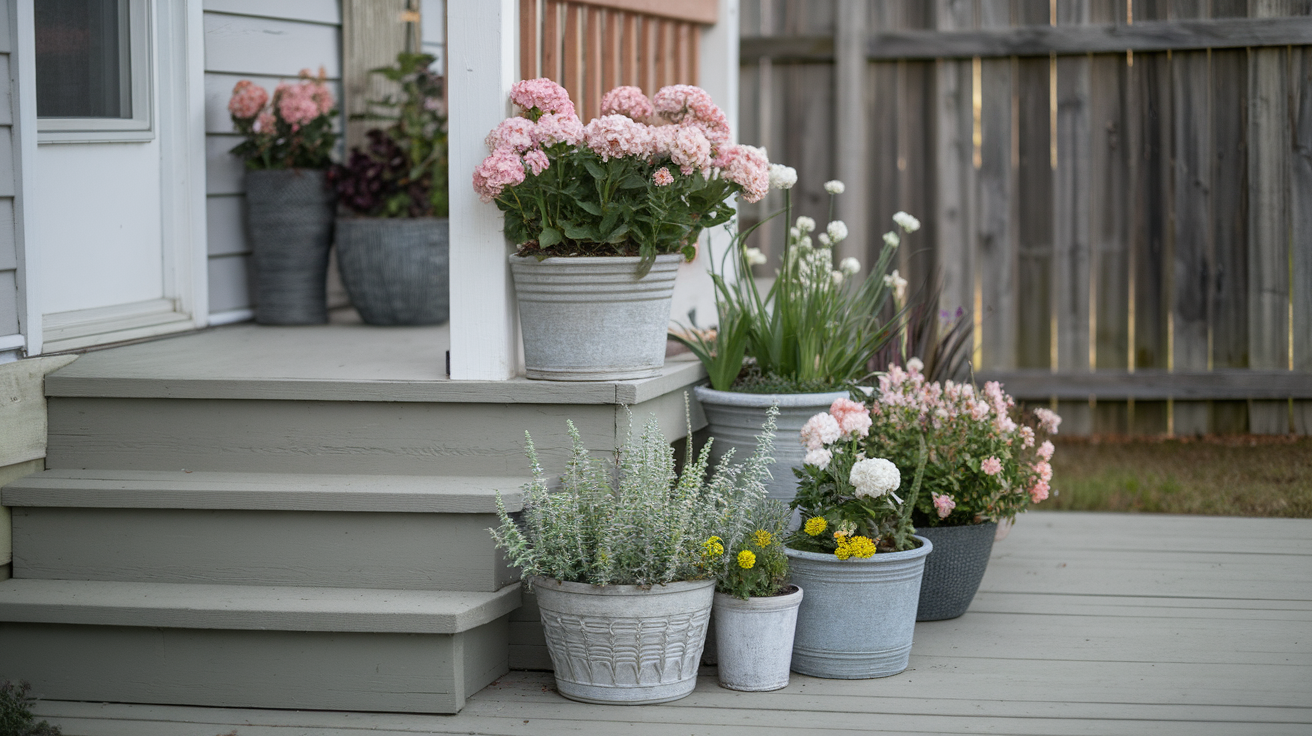
Group a few planters of different heights and shapes near your front door or porch for instant color and texture. You can fill them with annuals, herbs, or small shrubs, depending on your style and the season.
Use leftover pots or buy a few affordable containers.
Arranging them in clusters draws the eye and makes your entrance feel cared for. Container gardens are low-maintenance, easy to swap out, and flexible for changing spaces or themes.
13. Install a Bird Bath or Feeder
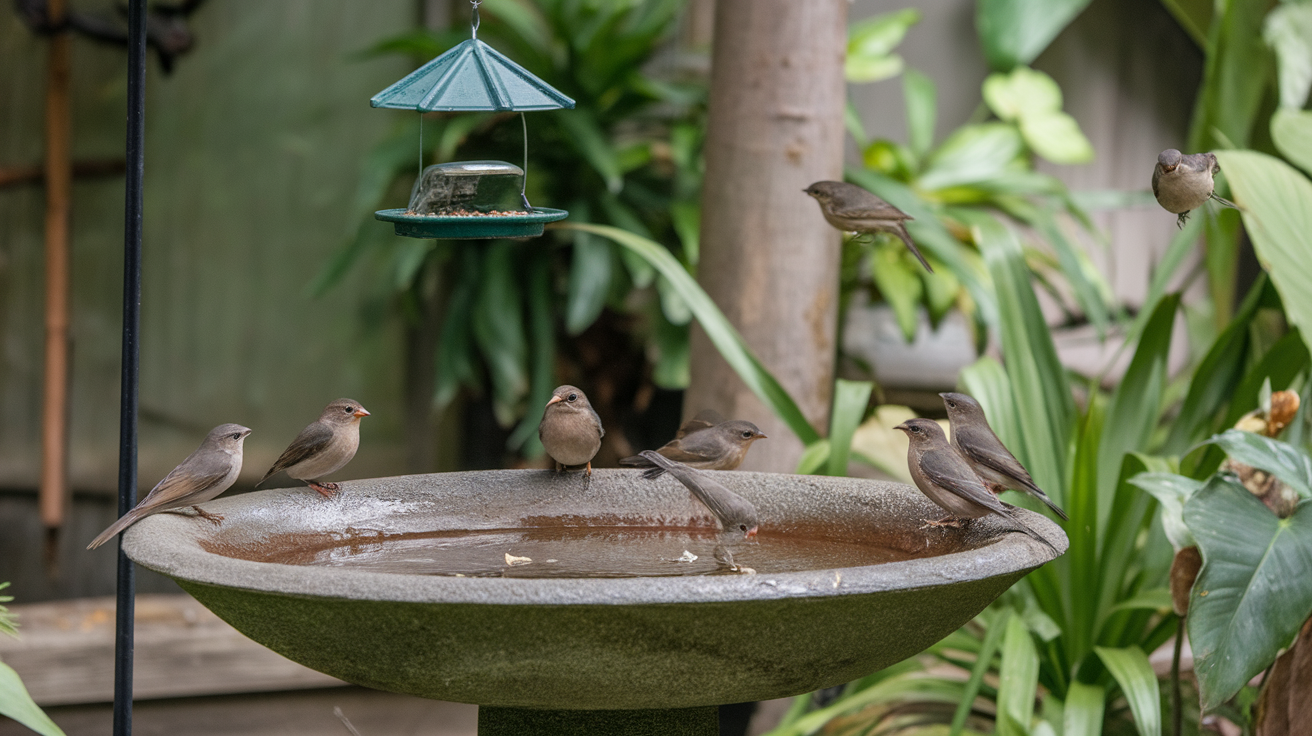
Attract birds and bring life to your yard with a simple bird bath or hanging feeder. You can build one from an old dish and stand or buy a basic model for under $20.
Birds bring color, movement, and pleasant sounds to your space.
Place the bath in a shaded area and keep it clean. It becomes a quiet focal point and a wildlife-friendly feature that adds personality and charm without much cost or work.
14. Feature a Small Tree
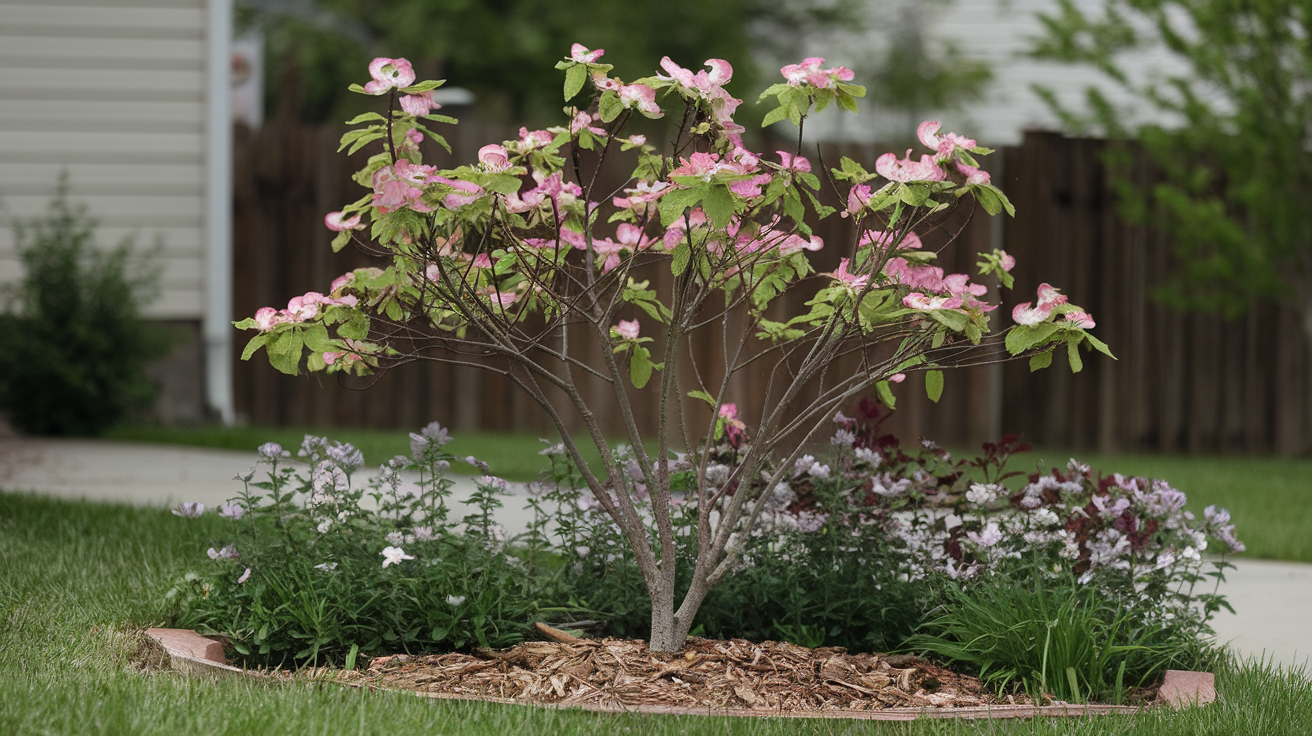
Add vertical interest and a focal point by planting a small tree near the entrance or in a corner of your yard. Trees like dogwood, redbud, or crabapple stay compact but offer seasonal beauty.
Many local nurseries carry native species at low prices. Over time, the tree offers shade, blooms, and structure.
Even a young tree adds elegance and balance to your layout. Once it’s planted, upkeep is simple, just occasional pruning and watering when dry.
15. Mulched Flower Beds with Native Plants
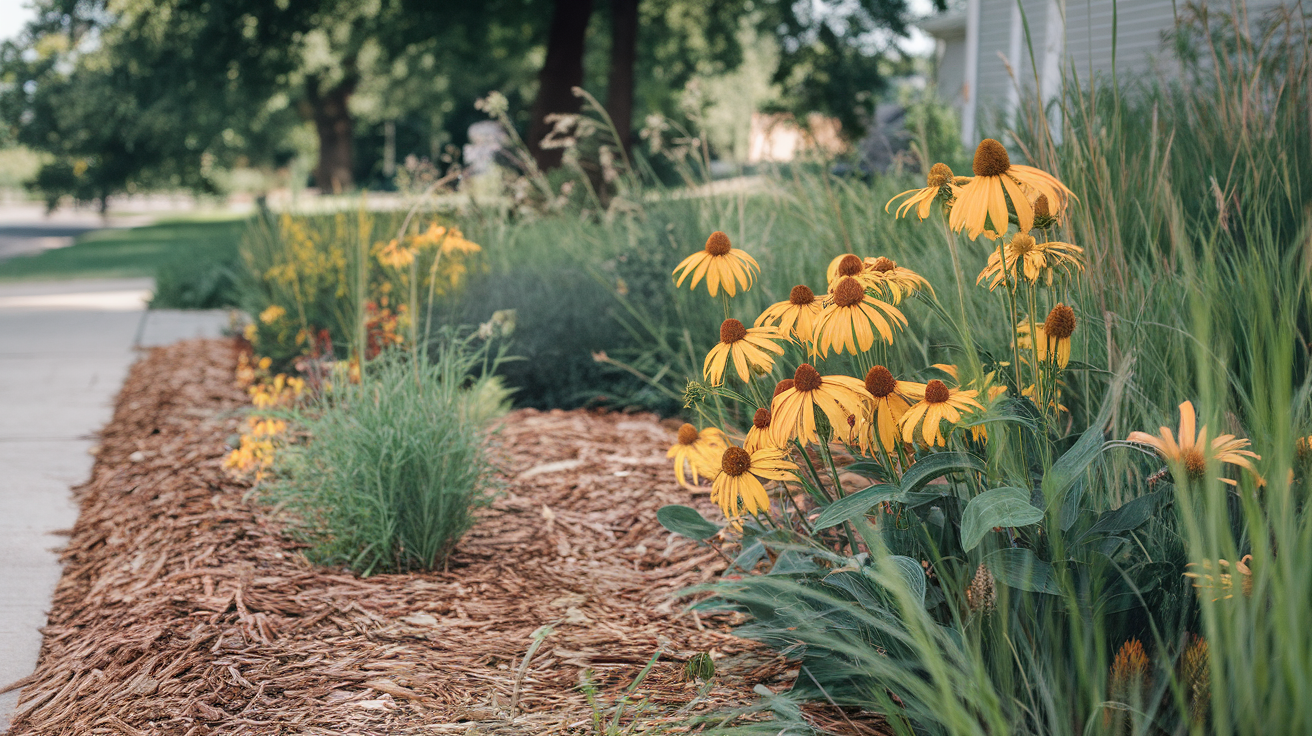
Mulch beds lined with native perennials are a simple, low-cost way to bring color and greenery to your yard. Dig out small beds near your porch or walkway, add a layer of mulch, and plant flowers that thrive in your region.
Native plants usually need less water, survive longer, and resist pests better.
They come back year after year, saving you money and effort. Grouping a few bold blooms together gives a high-impact look for less.
16. Use Simple Boxwood or Evergreen Hedges
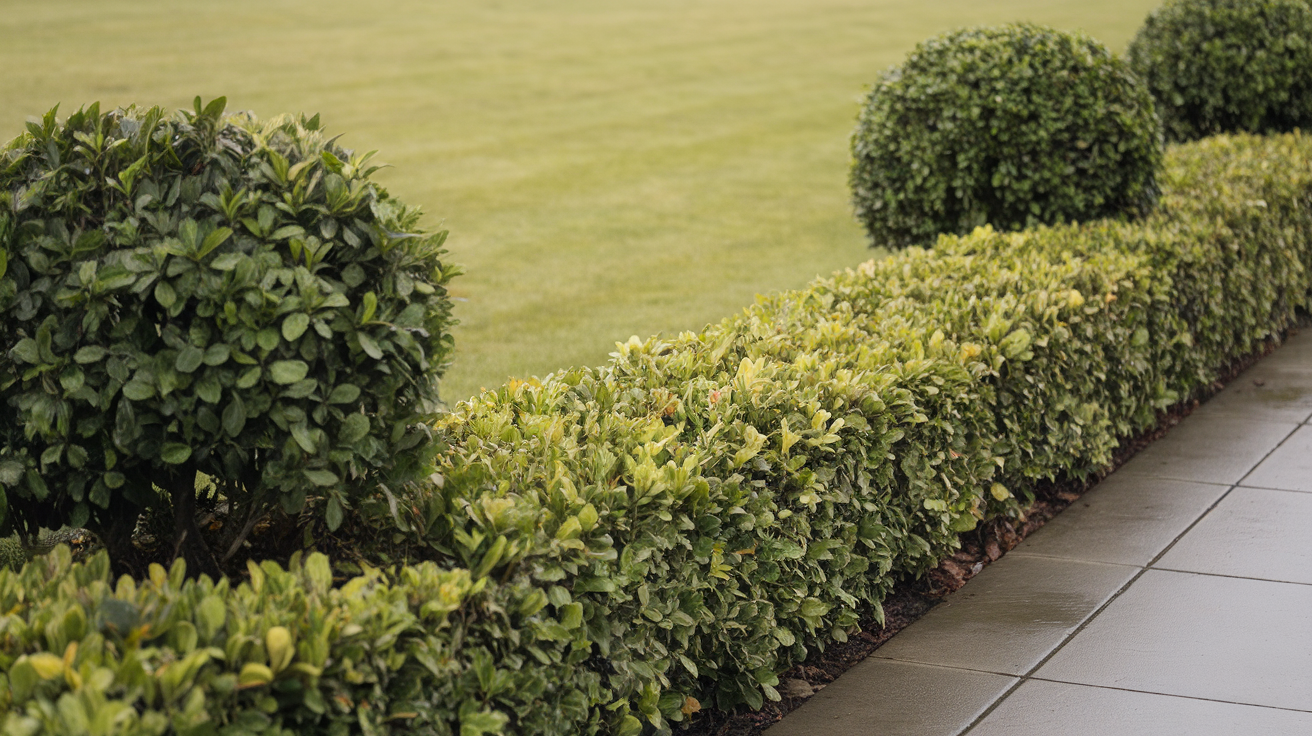
Low boxwood shrubs or small evergreen hedges frame your walkway or house neatly and stay green year-round. These plants are slow-growing and need just occasional trimming.
Plant them in rows or small clusters for a structured, classic look.
You can find young shrubs at garden centers for a low price, and they grow into full hedges over time. With minimal maintenance, this adds privacy, symmetry, and lasting curb appeal without seasonal replanting or fuss.
17. Vertical Pallet Garden
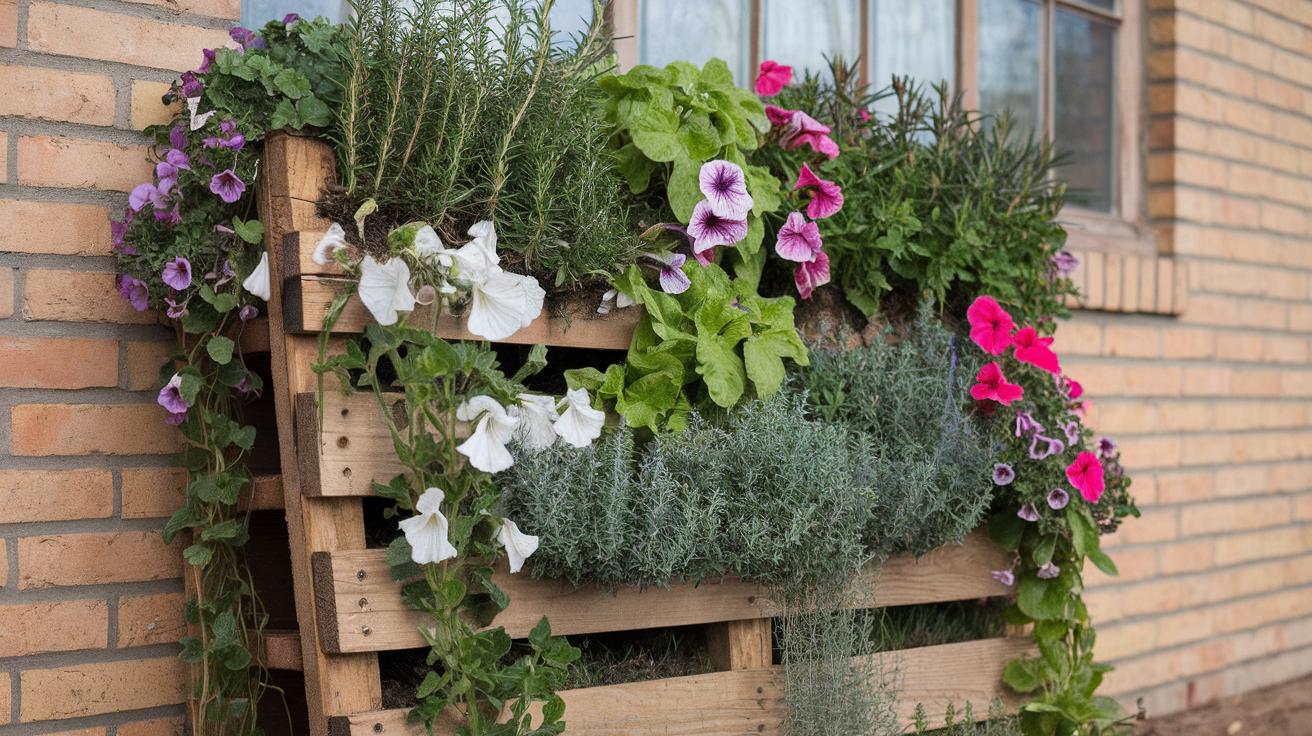
Turn an old pallet into a standing planter by adding planting pockets or small pots. Lean it against a wall or fence and fill it with herbs, flowers, or cascading greens. This idea saves space and adds a fun vertical feature.
You can paint or stain the pallet to match your home, and use it year-round with seasonal swaps.
It’s a clever use of scrap wood and works well in tight spaces where beds won’t fit.
18. Seasonal Decor Accents
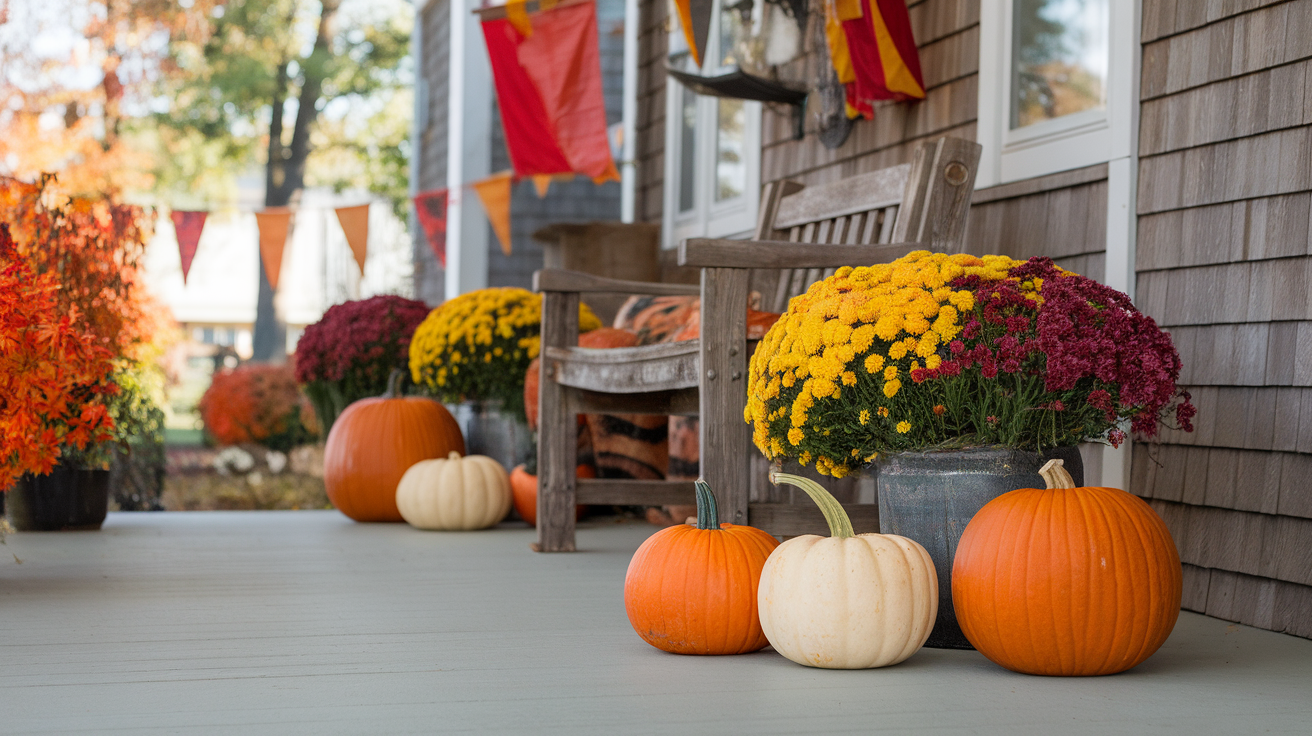
Freshen your yard throughout the year with simple seasonal decorations. In spring, add colorful planters or garden flags.
For fall, try mums, mini pumpkins, or straw bales. In winter, string up lights, hang a wreath, or place evergreen bundles. Most of these accents are reusable or low-cost, and you only need a few per season.
Changing décor gives your home an updated look regularly, without needing to dig, plant, or build anything permanent.
19. Build a Drip Irrigation System or Soaker Hoses

Save time and water by installing a drip line or soaker hose around your flower beds. Connect it to an outdoor faucet and weave it through mulch to slowly water your plants.
This simple setup cuts down your watering time and keeps moisture near the roots, which helps plants thrive.
It’s more efficient than hand watering and can be built with basic parts. Once it’s in place, it does the work for you all season long.
20. Install a Simple Bamboo Screen or Trellis

A bamboo screen or trellis is a cheap and easy way to add privacy or hide eyesores like utility boxes. You can build one with bamboo poles or buy a lightweight trellis and place it near a fence or porch.
Let climbing plants like jasmine or clematis grow up the frame for vertical greenery.
It softens harsh views and adds height and texture to your yard. This is a simple DIY project with a long-lasting impact.
21. Create a Mini Wildflower Meadow
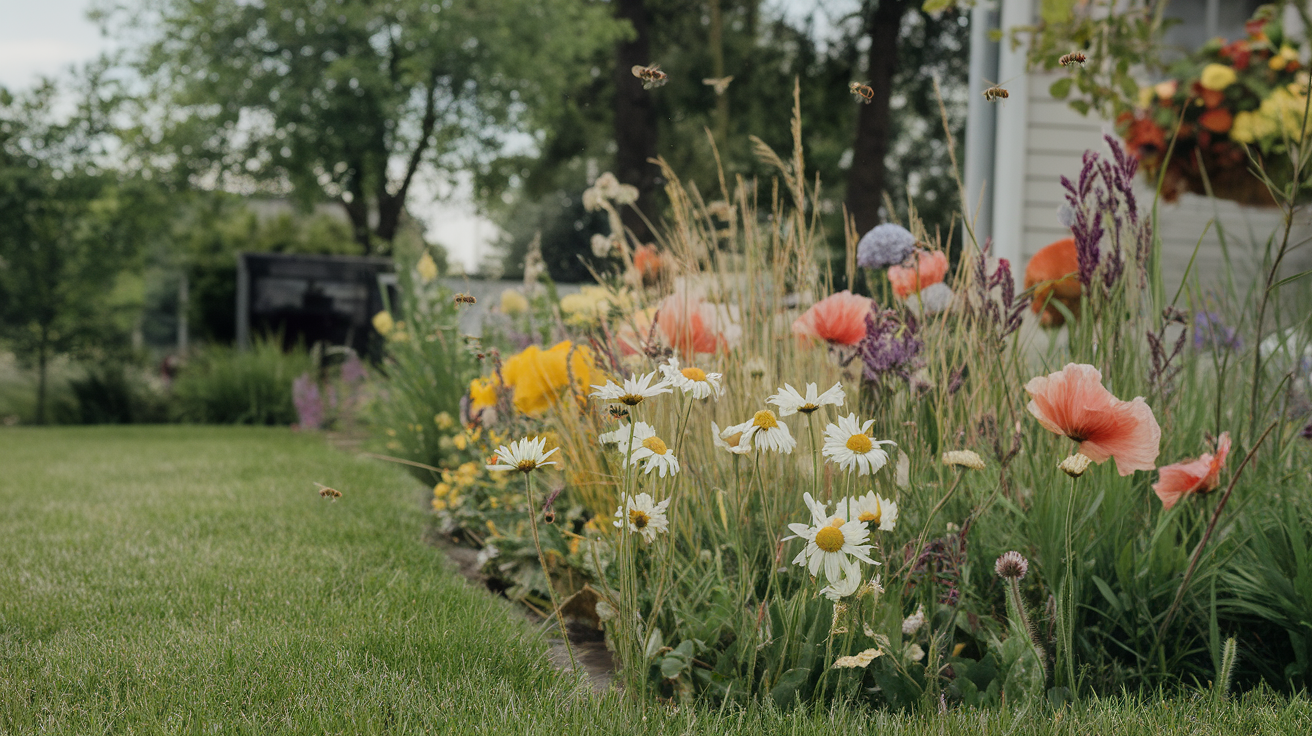
Turn a patch of your lawn into a small wildflower meadow by scattering mixed flower seeds. Daisies, poppies, and cornflowers create bursts of natural color and attract bees and butterflies.
These flowers are low-maintenance and often reseed themselves, making them a sustainable option.
Choose an area with full sun and water occasionally while the seeds germinate. Once they’re in bloom, the result feels full of life and movement, without constant upkeep or heavy planting costs.
22. Use Succulents in Gravel Beds
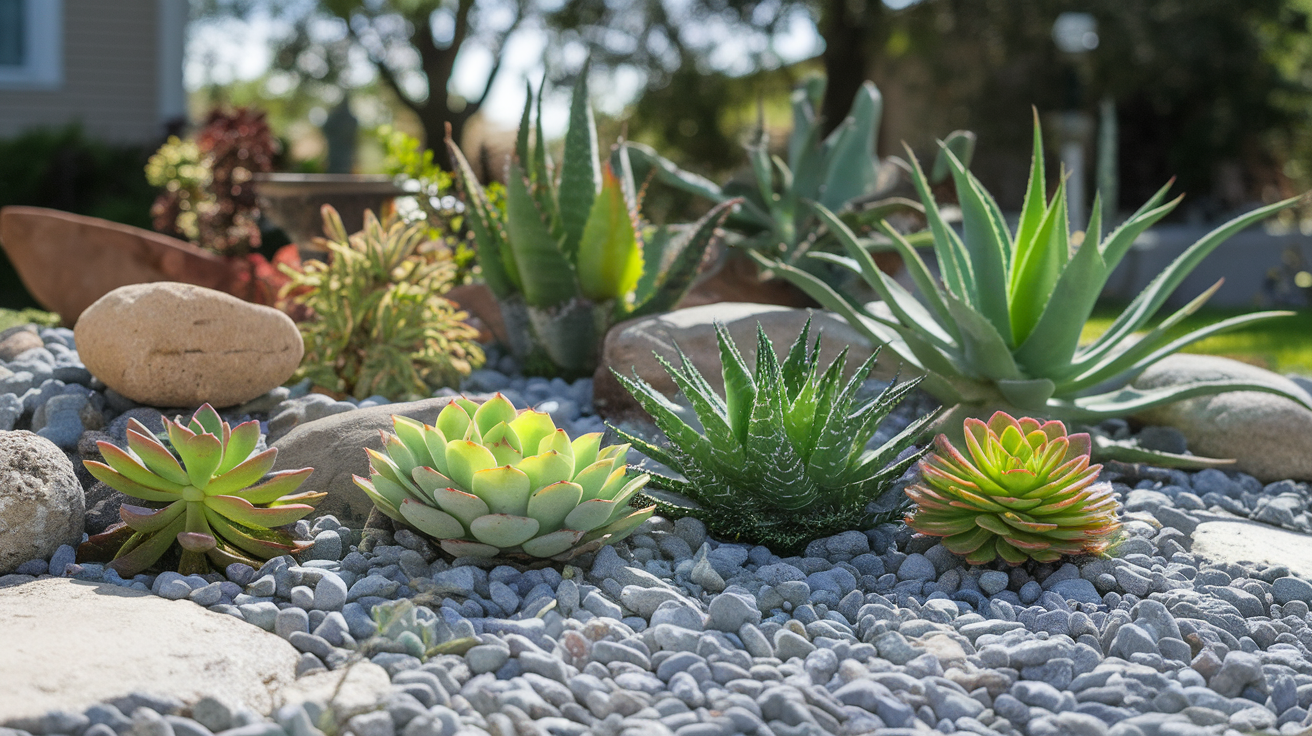
Succulents bring structure and variety to gravel areas and thrive with little attention. Their shapes and tones look great when grouped around stepping stones or nestled in decorative rocks.
They store water, making them ideal for hot and dry front yards.
Add a few varieties in a sunny corner, and they’ll keep growing with minimal effort. Gravel beds prevent weeds and help drainage. This idea adds sculptural appeal while saving water and money long term.
23. Paint or Stain Old Patio Furniture
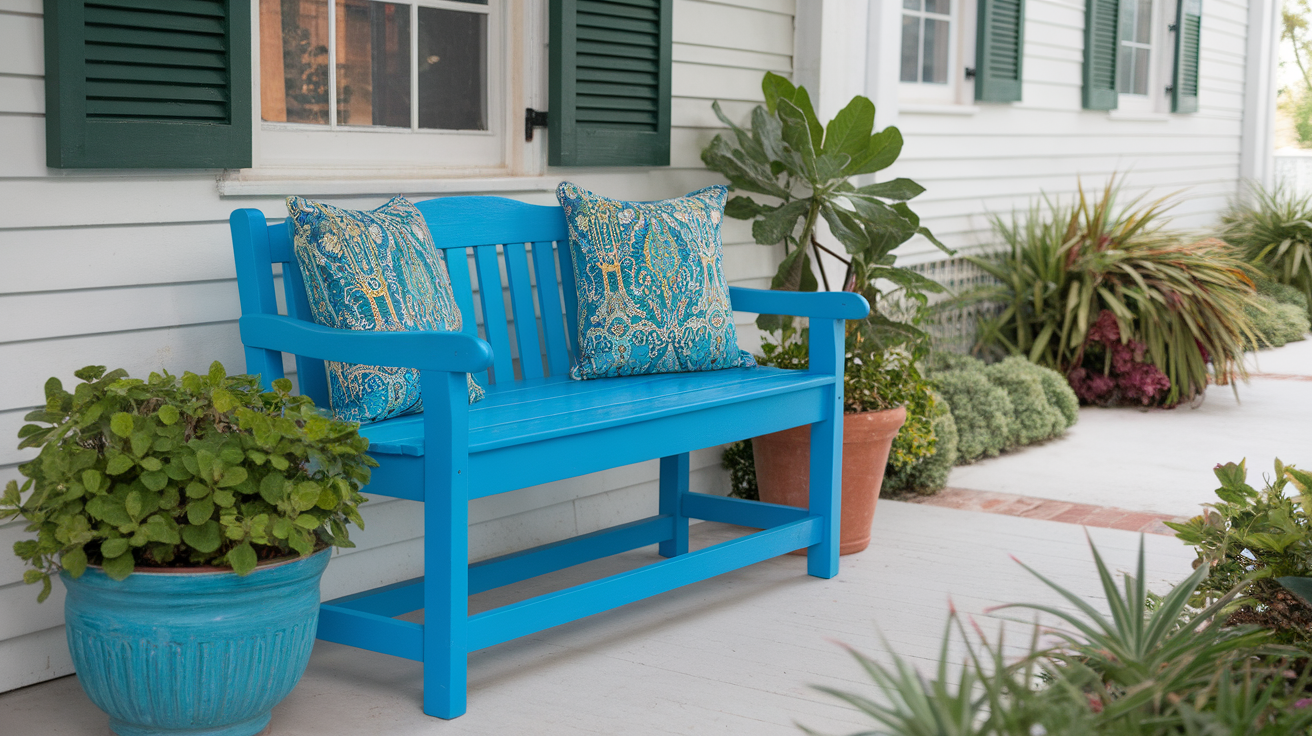
Instead of replacing worn porch chairs or benches, refresh them with a coat of paint or outdoor stain. Sanding and painting give old wood or metal a new life.
Bright colors can stand out against greenery, while natural stains blend into the garden. Add a cushion or place a potted plant nearby to complete the look.
This saves money and adds personality to your space. It’s a satisfying weekend project with visual rewards.
24. Add Ornamental Grass Clumps

Ornamental grasses like fountain grass, blue fescue, or switchgrass add softness, movement, and height to your yard. They grow quickly and are drought-tolerant, making them easy to maintain.
Plant them in mulch beds or near paths for added interest. These grasses fill gaps and add texture without needing fertilizer or frequent watering.
Their seed heads also look beautiful in the breeze. Even a few plants can make your yard feel more layered and complete.
25. Use Bottle or Brick Mosaic Borders
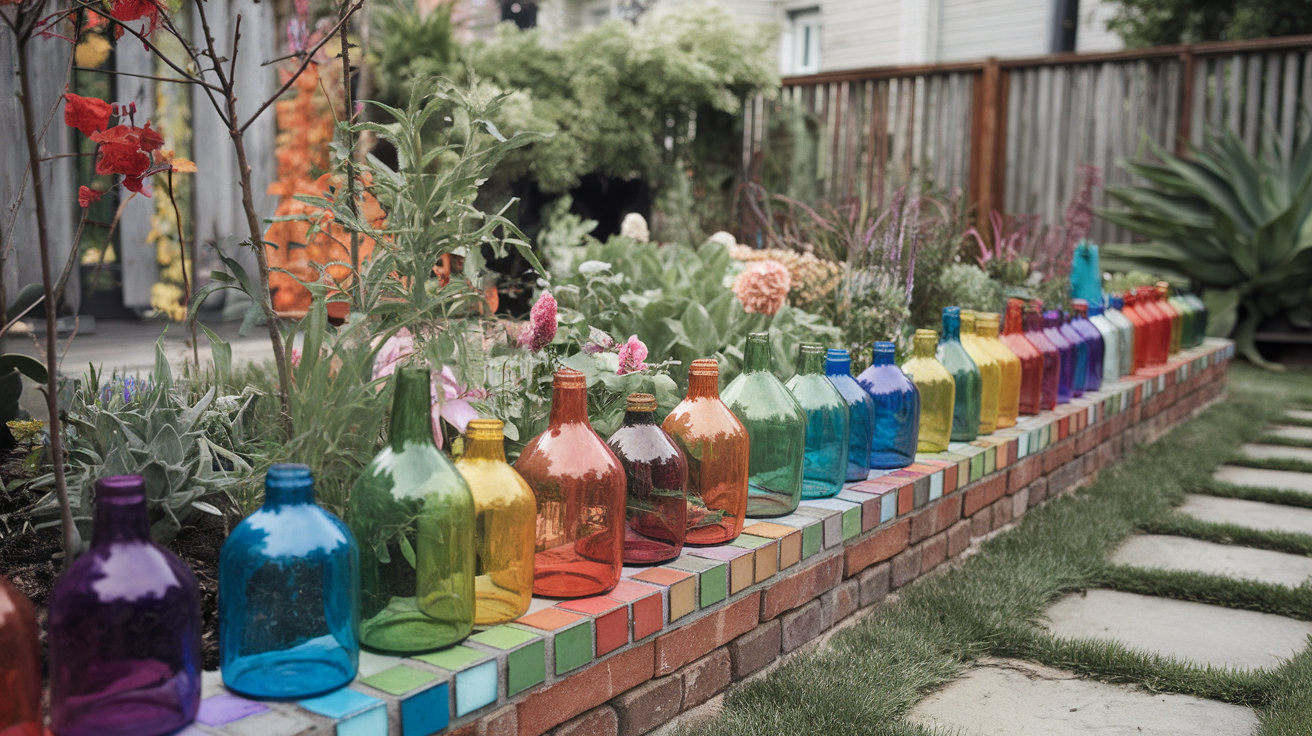
Give your garden beds or paths a unique edge by lining them with old bottles, bricks, or broken tiles arranged in a mosaic. Push bottles neck-first into the soil, or place bricks in a curved or zigzag pattern.
Mosaic borders add character and help define garden areas.
You can collect materials over time or ask around for leftovers. This creative touch stands out and costs almost nothing if you use reclaimed supplies.
26. Install Simple Solar Lanterns on Steps
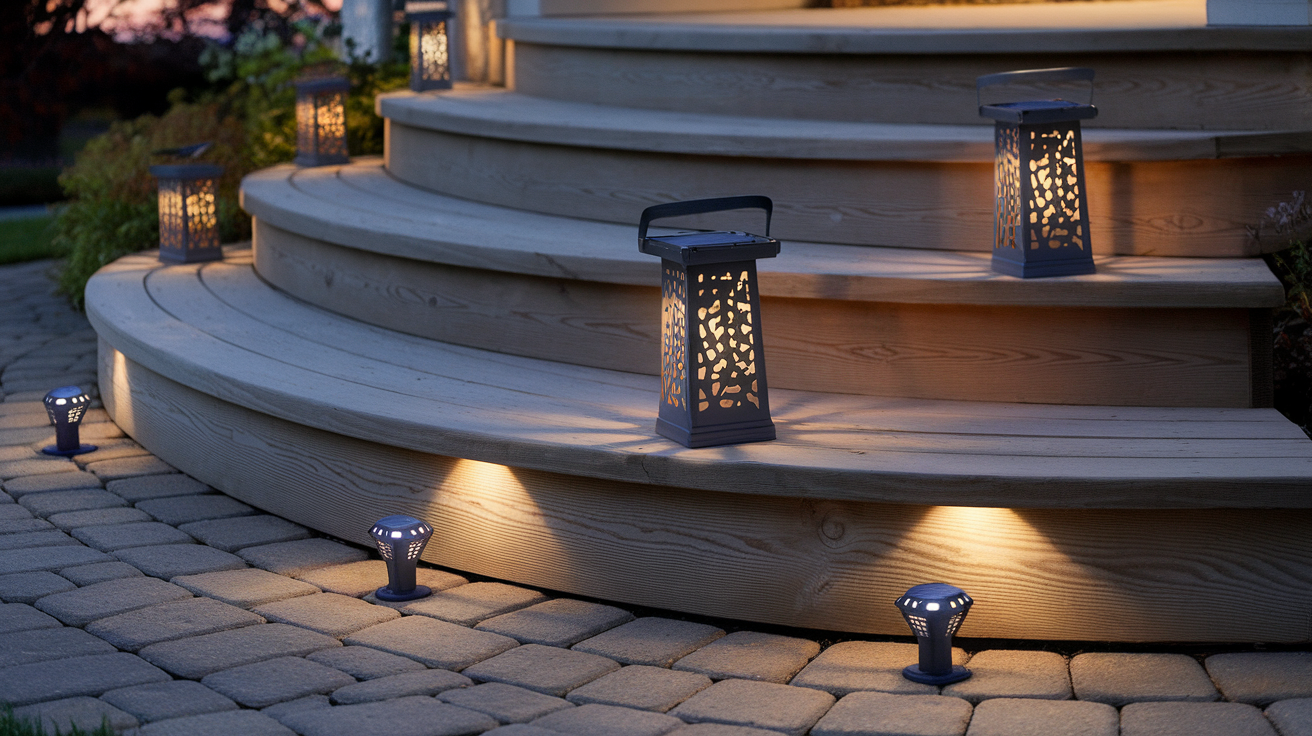
Add charm and safety to your porch or garden steps with solar lanterns. These lights charge during the day and turn on automatically at night. Stake them along the walkway or place them on porch rails or posts.
They highlight steps, guide visitors, and give a warm evening glow.
No wiring or tools needed, just place and enjoy. It’s an easy upgrade that brings function and atmosphere to your front yard after dark.
27. Plant Butterfly‑Attracting Native Shrubs
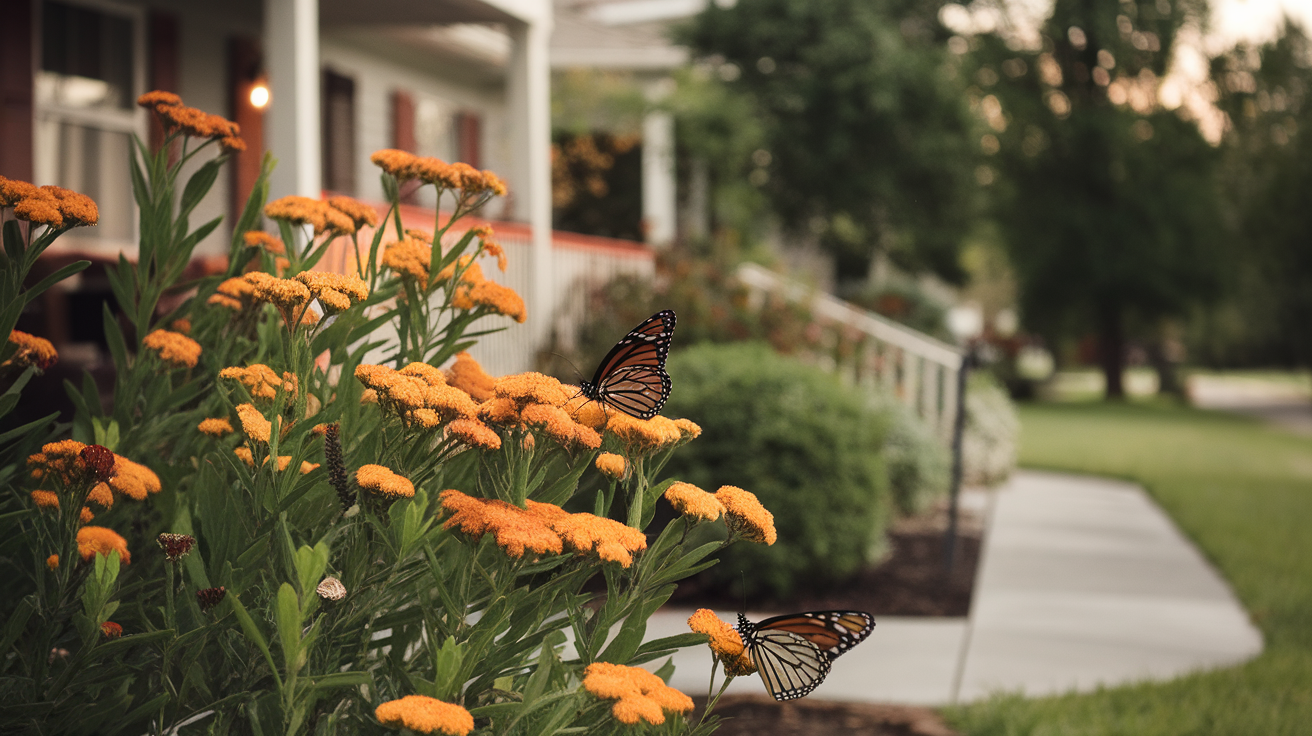
Native shrubs like butterfly bush, buttonbush, or spicebush invite pollinators and add beauty to your yard. They bloom seasonally and provide food for bees, butterflies, and birds.
These plants are low-maintenance, drought-resistant, and often pest-resistant too. Plant one or two near the edge of a bed or near your porch.
You get color, structure, and habitat for wildlife without much effort. They grow back every year and thrive with little care once established.
28. Use Organic Cardboard Under Mulch for Weed Control
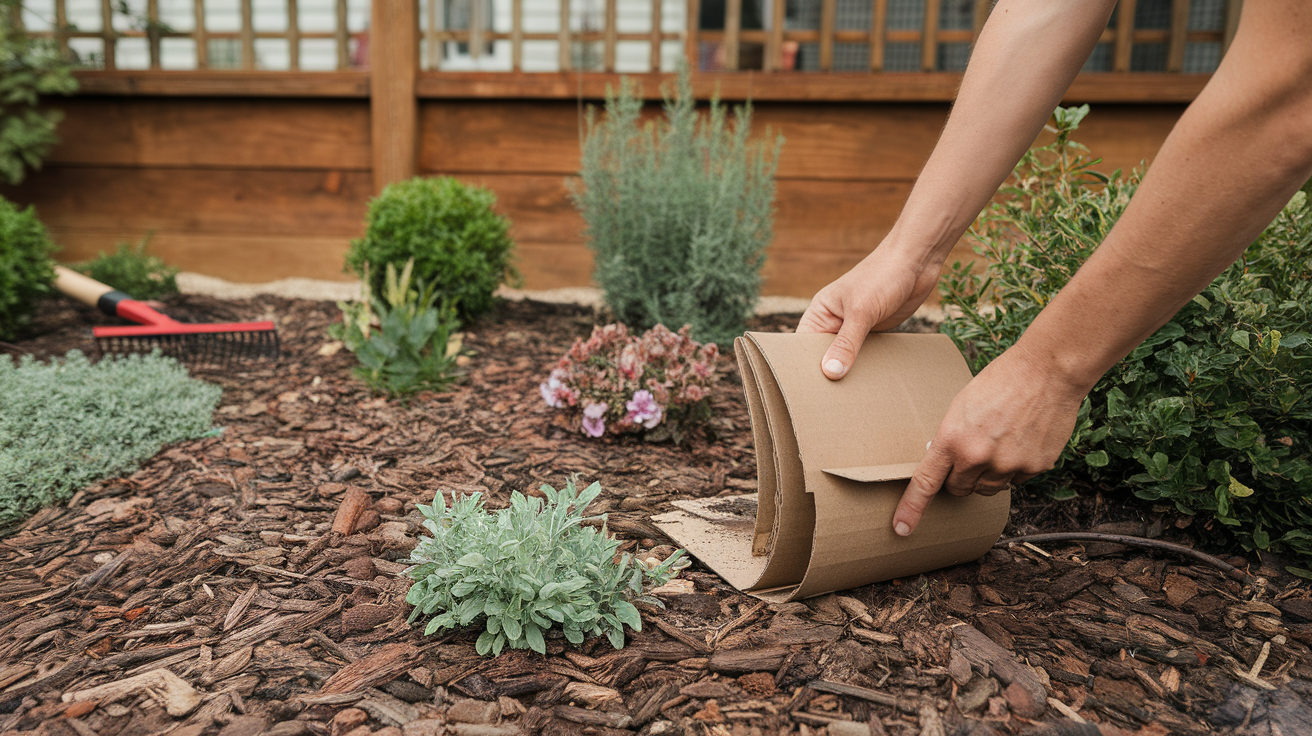
Stop weeds from spreading by placing cardboard beneath your mulch. Just flatten clean cardboard over soil, wet it slightly, and cover it with a few inches of mulch.
The cardboard smothers weeds, holds moisture, and breaks down naturally. This method saves hours of weeding and doesn’t require chemicals. It’s also a great way to recycle boxes from deliveries.
You get neat, healthy beds that last the season with minimal effort and cost.
29. DIY Painted House Numbers or Address Sign
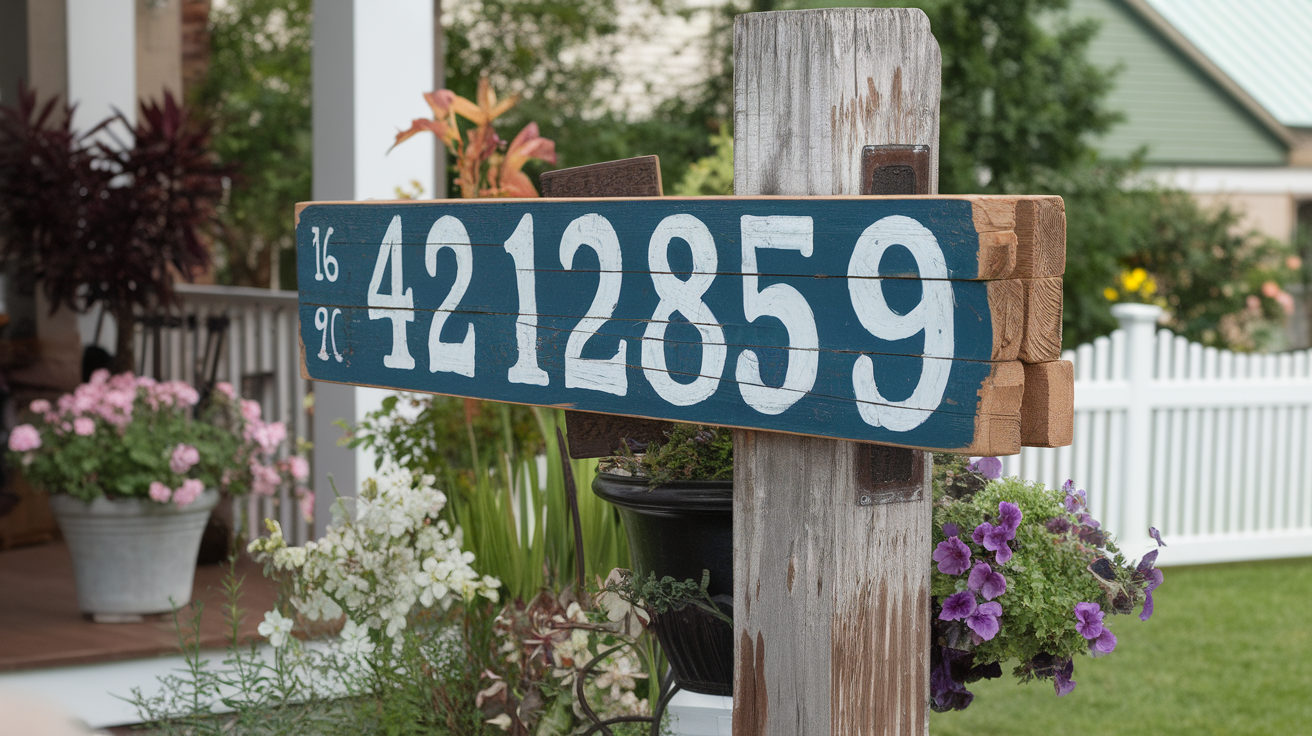
Make your front yard stand out with a handmade address sign. Use reclaimed wood, tile, or metal to display your house number clearly.
Paint bold numbers in a style that matches your home’s look, then seal it to withstand weather. Add small flower pots or mulch around the base for extra style.
This project is simple, useful, and personal. It improves visibility for deliveries and adds a finished touch to your entry.
30. Feature a Small Fairy Light Pergola
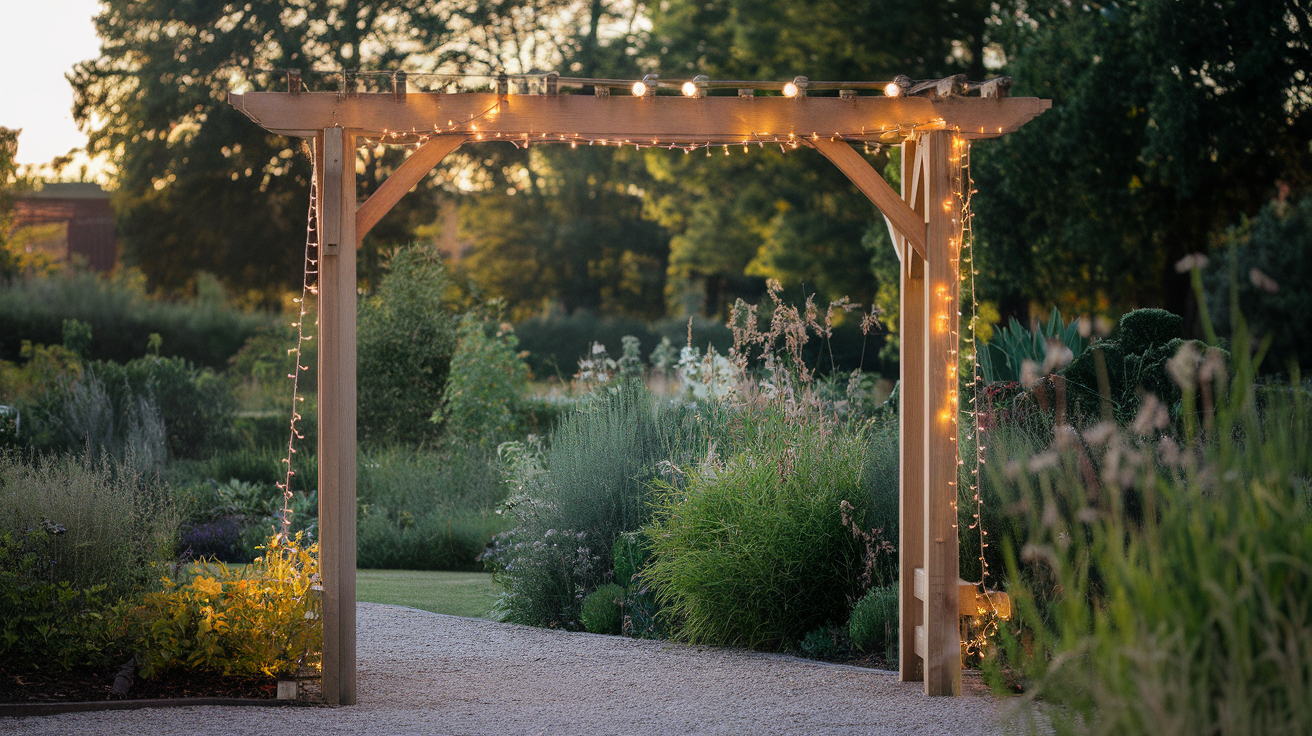
Create a cozy entrance or sitting area with a basic pergola or arch draped in solar fairy lights. Use wood posts or repurpose an old arbor, then wrap lights around the frame.
At night, the lights cast a soft, welcoming glow. It’s perfect over a front walkway, gate, or bench. Fairy lights are inexpensive, easy to install, and solar-powered for energy savings.
This idea adds whimsy and light without needing an electrician.
31. Build a Simple Raised Bed from Cinder Blocks
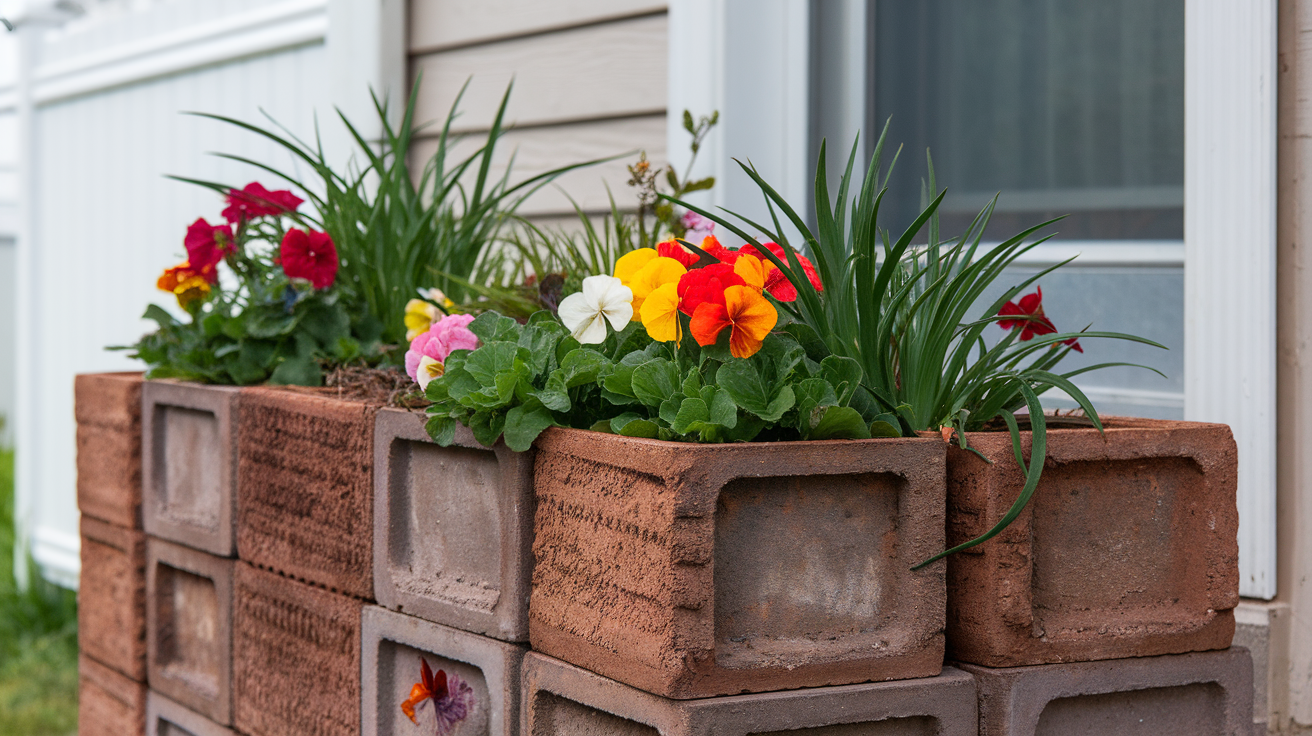
Use cinder blocks to form a raised bed for flowers or herbs near your porch or path. Stack the blocks in a rectangle, fill with soil, and plant whatever fits your space and sunlight.
Cinder blocks are inexpensive, easy to find, and offer a clean edge. You can even plant small flowers in the block holes.
It gives structure, height, and order to your garden, all without lumber or special tools.
32. Add Window Shutters from Recycled Wood
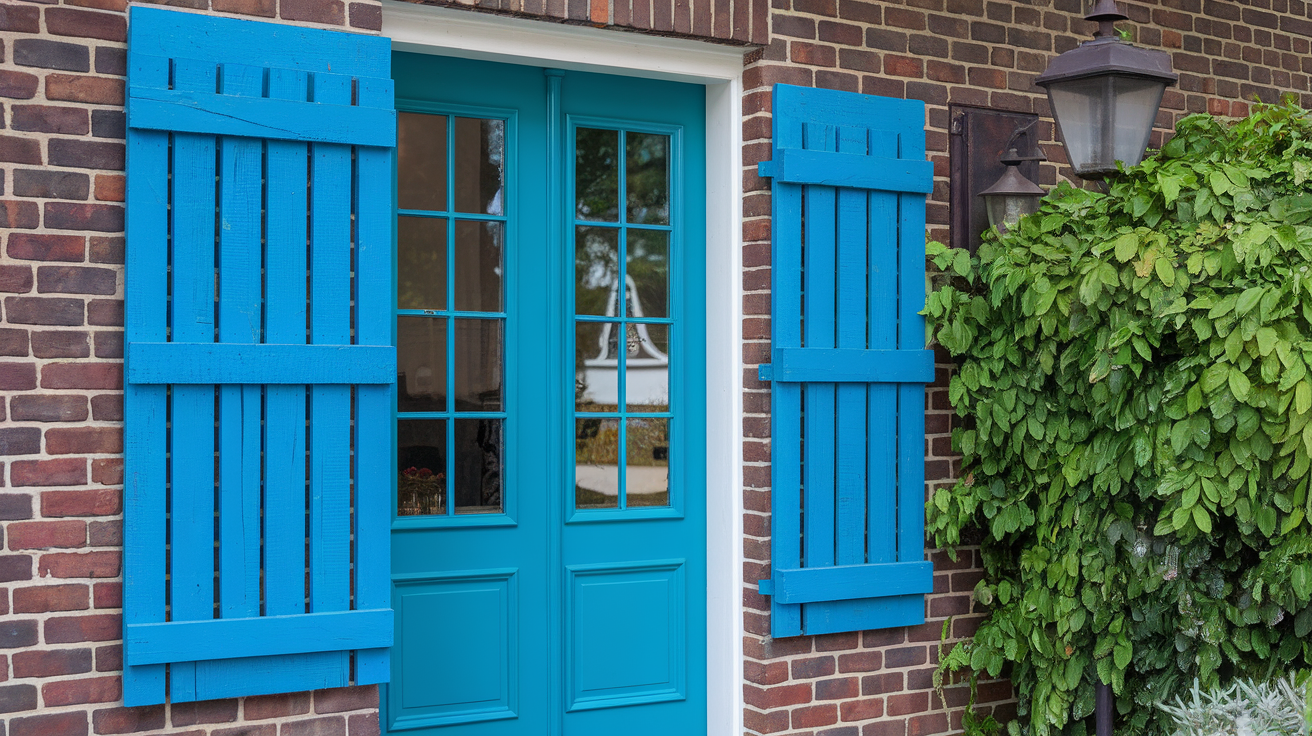
Build faux shutters from reclaimed wood to add dimension to your windows. Cut the boards to size, paint them a bold color, and attach them with screws or hinges. Even without functional parts, they give a custom, styled look.
Reclaimed materials reduce cost, and contrasting colors can highlight your windows beautifully.
It’s a small addition that upgrades your entire home’s front appearance. You don’t need carpentry skills to make it work.
33. Incorporate Decorative Fencing Panels
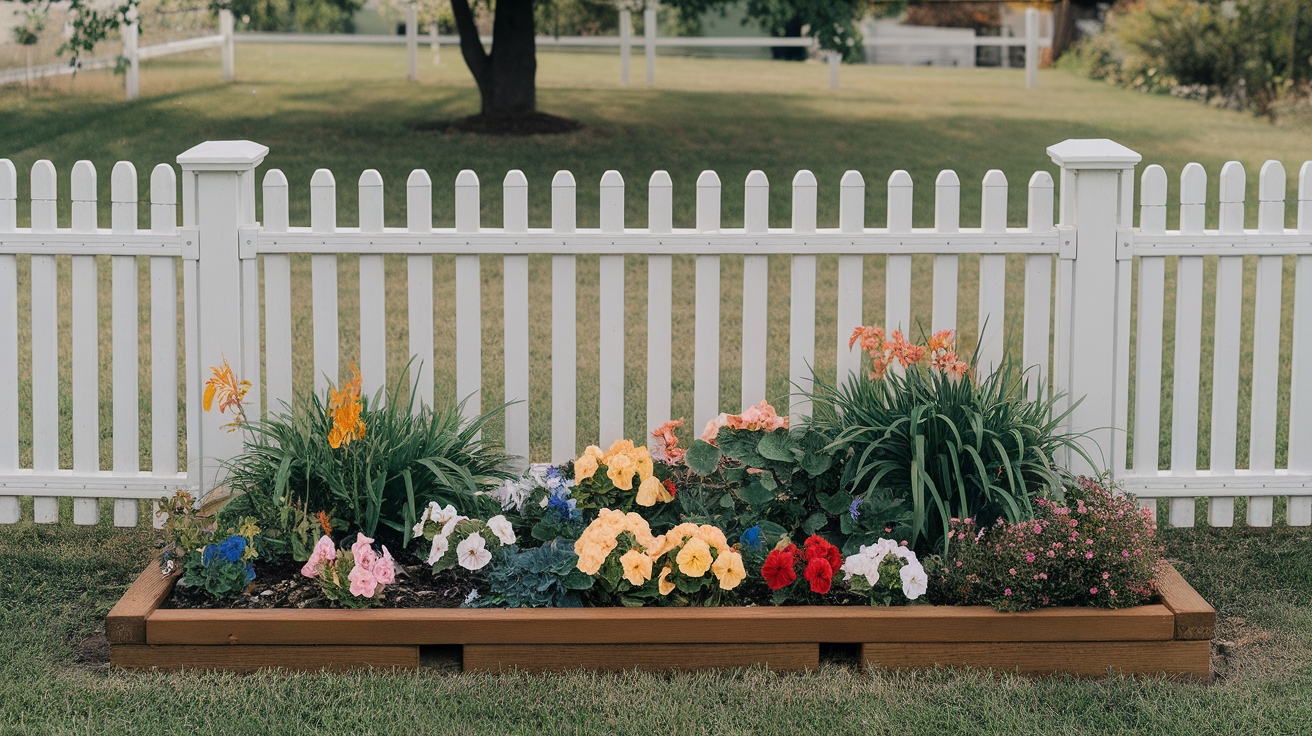
Install short fencing panels in front beds or along walkways to define space and add style. Use premade wood or vinyl pieces, or repurpose old lattice or pallet wood.
These small panels don’t block the view but give structure and height.
You can paint or stain them to match your trim or add contrast. They make flower beds look more polished and planned while costing much less than full fencing.
34. Use Colorful Annuals in Clusters
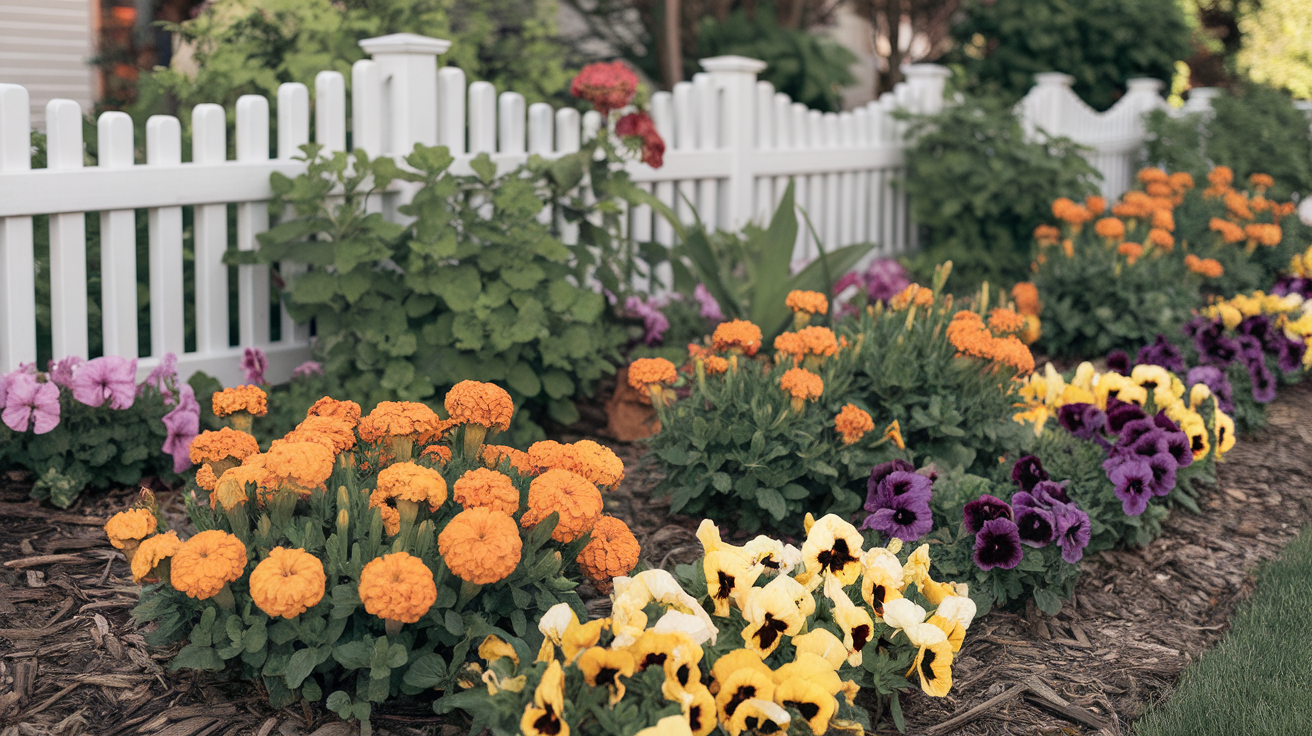
Plant small groups of annual flowers like marigolds, petunias, or pansies for bold bursts of color. These flowers are cheap, easy to plant, and bloom throughout the season.
Pick contrasting or matching shades and place them near walkways, stairs, or mailboxes.
Clustered color draws the eye and makes small spaces feel lively. Refreshing these each season keeps your yard looking fresh without major planting or design effort.
35. Plant Native Groundcover and Shrubs Together
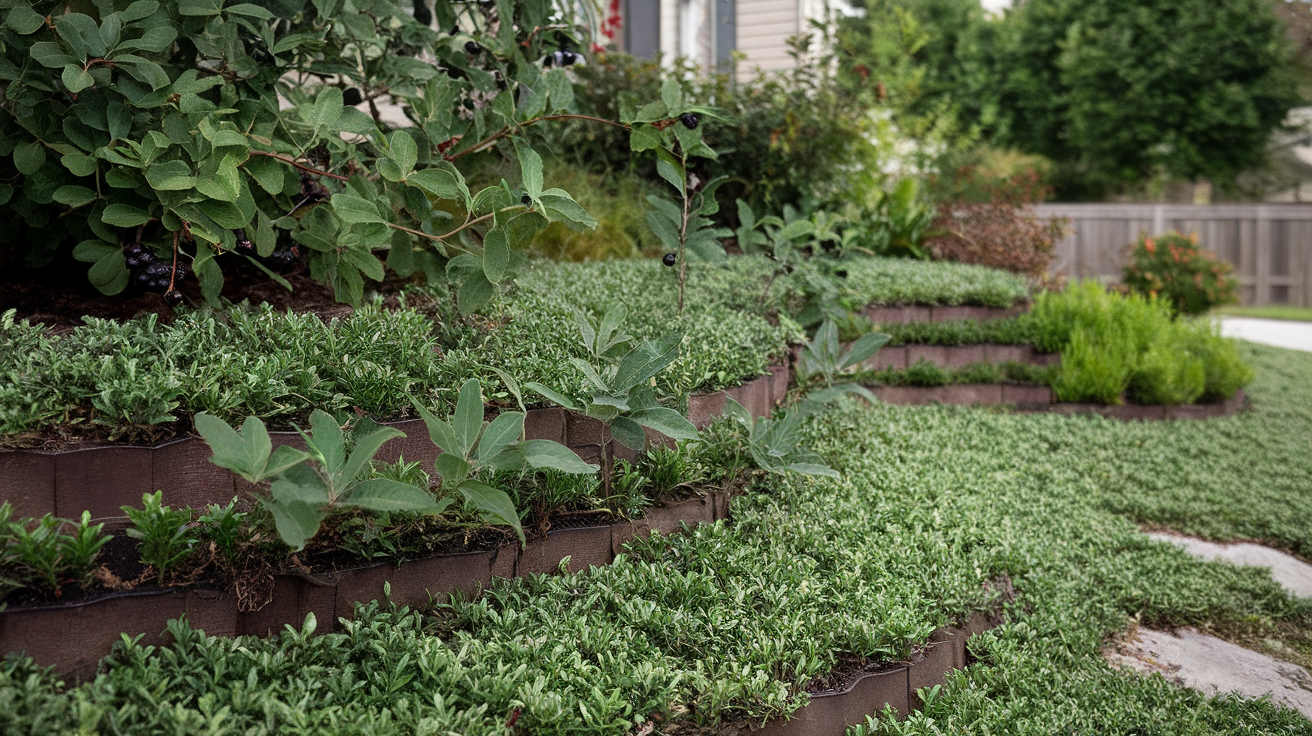
Create a layered landscape by pairing low-growing groundcovers with small native shrubs. Use combinations like creeping thyme with dwarf juniper or ajuga with inkberry.
This mix fills gaps, prevents weeds, and adds natural variety. Native plants need less water and care, making this both beautiful and practical. Grouping them creates depth and keeps the yard looking full year-round.
Once established, this combo thrives with minimal effort and continues to improve over time.
Why Cheap Front Yard Landscaping Still Works
I used to think you had to spend a lot to make a front yard look nice. But with a little time and smart planning, I found that simple changes can make a big difference.
- Big results don’t need a big budget: Small updates like mulch or pavers can make your yard shine.
- Focus on function and beauty: A clean path and tidy edges make everything feel more put together.
- Boost your home’s value: Even low-cost changes can increase your home’s curb appeal.
- Low-cost projects last: Trimmed shrubs and perennials keep things looking good for years.
- Beauty on a budget: You can still have a charming yard without spending a lot.
- Less money, less upkeep: Cheap doesn’t mean hard; these updates are easy to maintain.
- Creative choices matter: A little effort and imagination can go a long way.
Conclusion
You now have practical, affordable front yard landscaping ideas that boost curb appeal without going over budget.
From mulch beds and gravel paths to recycled planters, native plants, and DIY borders, each idea adds structure, color, and personality.
These low-cost projects are easy to tackle on weekends and work well in small or large spaces. You can try one idea at a time or combine several for a cohesive look.
None of them require fancy tools or professional help, just some effort and basic supplies.
With a little planning and regular care, your front yard becomes more inviting, organized, and visually balanced.
A beautiful yard doesn’t have to cost much. Small updates done right can leave a strong first impression.


